










































Richard Romano has been writing about the graphic communications industry for 20 years. He is an industry analyst, author and co-author of more than half a dozen books.

Read More… Find article at PrintingNews. com/21160702
As we all arise from the bunkers and head out to industry events, it’s common to greet old friends and colleagues with, “It’s great to be back at shows again!” And yet, the existential question we keep asking ourselves is, “What is the future of shows?”
I haven’t pored over attendance data from the shows and events that were held this year, but I do know that event organizers fretted turnout more than in the “Before Times.”
Whenever show attendance is low, we always hear the rationalization, “But the right people were there.” Sure, some of us have been around long enough to roll our eyes, but there is a kernel of truth in it.
The recent Americas Print Show, held in early August in Columbus, Ohio, didn’t quite attract the numbers they had hoped, but some of the exhibitors I spoke with were happy that they could engage with booth visitors longer and have deeper conversations. One exhibitor sold half a million dollars’ worth of equipment. Yeah, more bodies would be nice, but solid leads are good, too.
Still, these are not problems unique to one show; I think all event organizers will wrestle with attendance challenges, at least for the foreseeable future.
You have to ask what the value of a physical show is. What can your average printer get from an event that they couldn’t from a webinar or other virtual venue or from online research—or just reading WhatTheyThink regularly? Is it worth getting on a plane or taking a few days away from the business?

“Name brand” mega-shows are going to have an easier time of it than new or smaller shows, and it’s usually at these mega-shows that major product launches are made. But even then the future isn’t entirely certain. We’ve heard rumblings that vendors question the value of the big shows, but they still show up. How long will that remain the case?
At the same time, specialty shows and events may have more appeal for some. The debut Amplify Print show focused on finishing, and was by all accounts a success. So a “long-tail” approach to shows may end up being a sounder approach than a mega show.
None of these are new questions; we’ve been having these conversations for years. Ultimately, it’s going to be a case of the industry “right sizing” the event landscape and deciding how many shows it really needs and can support, and what those shows will look like. ●



The EFI™ Pro 30h hybrid flatbed/roll-fed LED wide format production printer is all about you. Because it has everything you need to widen your capabilities, versatility and productivity. It prints on a wide variety of substrates for a wide variety of applications – all with superior image quality and environmentally friendly benefits. Let’s build your brilliant future. Together. Scan to learn how to widen your competitive edge.
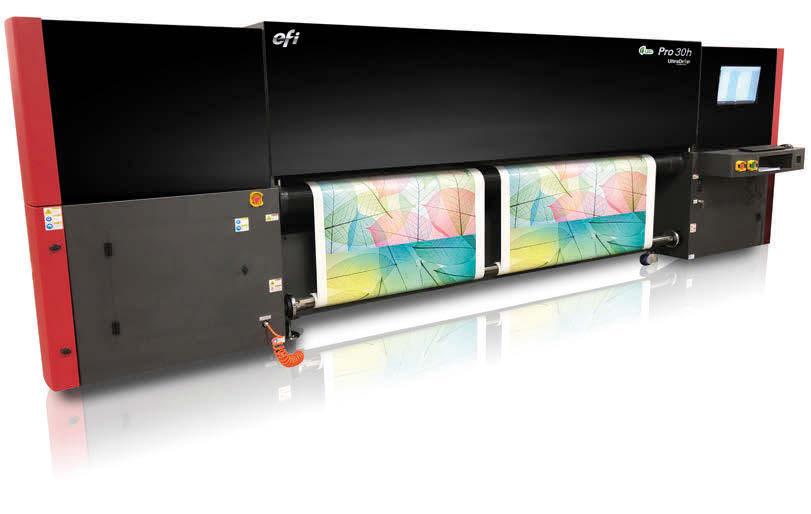
Kelley Holmes kelley@whattheythink.com 772-579-7360
PRODUCTION EDITOR & MANAGER Amy Hahn amy@whattheythink.com
EDITOR
Jessica Taylor jessica@whattheythink.com
Richard Romano richard@whattheythink.com
Cary Sherburne cary@whattheythink.com
Stephanie Papp stephanie@whattheythink.com 6 02-639-0530
PRESIDENT Eric Vessels eric@whattheythink.com 740-417-3333

COO Adam Dewitz adam@whattheythink.com
Kevin Abergel Lou Caron Dave Fellman Joanne Gore Chuck Gerardi
Steve Johnson Jennifer Matt Lois Ritarossit Frank Romano Ralf Schlozer
Bobbi Burow, CreativityTank LLC bobbi.burow@gmail.com

Heidi Tolliver-Walker Trish Witkowski Warren Werbitt Danielle Yuthas David Zwang
Cannabis sign regulations vary greatly from state to state.
Richard RomanoIndustry insiders share tips to help work around the envelope shortage.
By Trish Witkowski
DON'T WAIT TO AUTOMATE Software is your answer to labor shortages.
For subscription info, change of address, and other updates email help@whattheythink.com
By Jennifer MattINKJET MAKES STAFFING EASIER





Three senior managers share their stories.
By Lois Ritarossit

RELATABLE AUGMENTED REALITY How to use AR to tell better stories
By Heidi Tolliver-Walker2038 Ford Parkway #218, Saint Paul, MN 55116. Subscriptions: Individual subscriptions are available without charge in the U.S. to qualified subscribers. Publisher reserves the right to reject non-qualified subscriptions. Annual subscription prices in the U.S.A $95; Canada $125 USD; all other countries $150 USD. Printed in the USA. Copyright © 2020 WTT Media, Inc. All rights reserved. No part of this publication may be reproduced or transmitted in any form or by any means, electronic or mechanical, including photocopy, recordings or any information storage or retrieval system, without permission. WTT Media Inc. does not assume and hereby disclaims any liability to any person or company for any loss or damage caused by errors or omissions in the material herein, regardless of causation. The views and opinions in the articles herein are not those of the publishers, unless indicated. The publishers do not warrant, either expressly or by implication, the factual accuracy of the articles herein, or of any views or opinions offered by the authors of said articles.
The cannabis market landscape
 By Joanne Gore
By Joanne Gore
There are multiple factors to considering when estimating for digital embellishments.
By Kevin Abergel
The three big concerns in choosing signage materials
By Richard Romano
Get in on the ground floor with graphene in textiles.

By Cary Sherburne
CANNABIS PROS AND CONS Both in the workplace and as a print and packaging opportunity

By Lou Caron

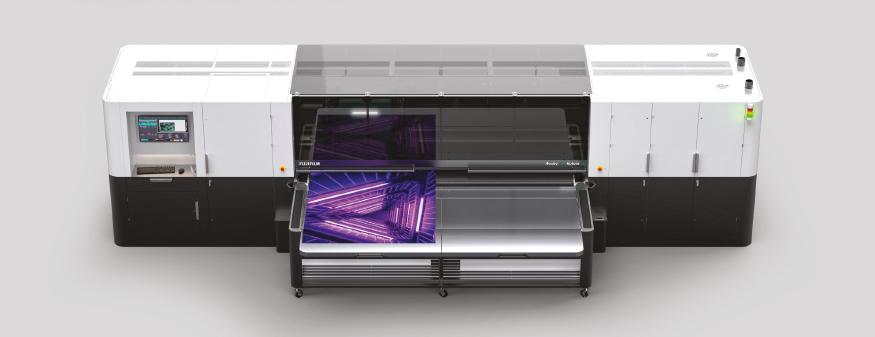
Printing shipments see the best June since the “Before Times.”
By Richard Romano
How to identify and motivate your stellar sellers.
By Dave Fellman
EXECUTIVE Q&A
Catch up with Francis McMahon, executive vice president at Canon Solutions America, Production Print Solutions.
By Richard Romano & Adam Dewitz
Printing United Preview
By Richard Romano
Seven tips for the return of events
By Danielle Yuthas
JOHNSON’S WORLD Musings, droppings, streams and flashes
By Steve Johnson

twitter:
@PrintingNews; @WideFormatSign; @whattheythink facebook: Printing News; wideformatsignage; @whattheythink linkedin: Printing News; linkedin.com/groups/1780044; whattheythink youtube: PrintingNews.com

Print technology and production methods have been changing along with the changing market requirements. All of this coupled with the “can do nature” of print and packaging service providers, continues to push technology and equipment manufacturers in new ways.
New modular component production solutions can be integrated and combined with almost all print ing technologies including digital, offset, flexo, screen and inkjet. They can be “home grown” or offered as a manufacturer’s configurable product solutions.
solutions and the digitalization of almost all printing technologies, especially analog, there really isn’t much that can’t be done to create an application based print production solution. Modular production technologies are becoming almost ubiquitous, especially in packaging applications, since the requirements can be so diverse. However, they are also finding their way into the production of com mercial print applications. So where do you start?
First of all, try not to reinvent the wheel. As the market requirements evolve, many equipment manufacturers have been developing more flexible con figurations to better address those requirements.
A good example of that is the newly released

What problem are you trying to solve or what is the application?
HP Indigo V12 label press, which provides flexo performance in an all-digital press. If we look at the MGI AlphaJET, also known as their “printing factory,” we can see modularity and flexibility that can be tailored to many packaging and commercial applications.
Flexo presses have been providing product-spe cific customizations for decades, and now flexo manufacturers are expanding their offerings even further. Bobst, W&H, Mark Andy and many others have been leaders in this field for years. Heidelberg has recently put more focus on flexo along with their Gallus division and is offering inline manufacturing solutions for labels, folding cartons, packaging for liquids, lottery tickets, etc. Their solutions are designed to be modular, flexible and scalable
so they can adapt to your changing needs. With the recent acquisition of Inca Digital Printers and SCREEN GP IJC by Agfa and the acquisition of Edale by Canon, we may begin to see even more flexible targeted print and packaging solutions.

Analog press and finishing equipment have always provided the “one solution fits all” design, where production is primarily confined to discon nected processing steps, except for some flexo applications. It has served the printing industry well and continues to, however as the market demands change, there is a need to think about print production differently. As a result, offset and even digital press manufacturers are realizing that they need more flexibility in their offer ings, and are working more with partners toward that end.
Read More… Find article at PrintingNews. com/21160645
What if you can’t buy it off the shelf? Certain print and packaging applications may require bespoke solutions than aren’t offered by mainstream equipment manufacturers.
However, before you get out the welding equipment and electronics, while it may sound obvious, the most important thing you need to understand is what your end use requirements are, and don’t initially get hung up on how to get there. Too often people get hung up on the how, and it becomes more important to them than the why, which can produce less than optimal results.
Next is to determine what unique features are required. For example, is it: imaging, embellishment, finishing/converting, material transport or all of the above? This is key, because if you start there you can begin to identify partners early on that can help you refine and perhaps even construct your ultimate solution.
Take Zumbiel Packaging, a large paper board packaging production house in Hebron, Ky., where they live by the can do attitude of manufacturing. They worked with partners Graphic Systems Solutions (GSS) and Tresu to integrate new and refurbished flexo stations with Kodak inkjet
technology to enable the combination of digital and flexo on-demand printing. Zumbiel’s configuration required about six to eight months of engineering preparation for installation, at a market price 25% to 30% below other production inkjet press solutions in the market, and it was targeted to his specific application needs.
Another great example of a bespoke application is the V-Shape Alphaflex. This solution was developed to address the specific need of creating one-handopening single-serve packets of almost any liquid or powder from foods to drugs. It starts with rolls of blank substrate manufactured from recyclable homo polymers and other biodegradable materials that are suitable for composting. From there it is printed using Memjet inkjet components, converted, filled and sealed. It can print and fill manufacturing solution to create up to 300 filled single sachets per minute.
need to address your specific needs.
There are also a few engineering companies that have experience with designing unique print and packaging solutions.
Engineered Printing Solutions located in East Dorset, Vt., is a bespoke print solution engineering and manufacturing company. With the motto: “No Two Print Machines are Alike,” they epitomize the term bespoke print solutions.
Kirk-Rudy, located in Woodstock, Ga., has been engineering and manufacturing bespoke solutions for print and packaging material handling since 1967.
Grafisk Maskinfabrik, commonly known as GM, is a global player on the labelling market, providing advanced solutions for the self-adhesive label converting, finishing and flexible packaging industry.
Integrity Industrial Inkjet Integration has developed unique printing systems that print on nonwoven fabrics, textiles, metals, ceramics and even direct-to-food.
New modular component production solutions can be integrated and combined with almost all printing technologies including digital, offset, flexo, screen and inkjet. They can be “home grown” or offered as a manufacturer’s configurable product solutions.
There is help out there.
The introduction of inkjet took hybrid and bespoke production solutions further by enabling the imaging engine to decouple from the standard transport, and in its place, become part of a custom solution. As a result, we are just beginning to see the kind of creative opportunities that can be achieved. If you haven’t already, visit the one of the PackExpo events held in various cities around the globe. It is a great place to get the creative juices flowing and see what kind of unique solutions can be designed and built. You may even find some of the pieces you
Inkjet printhead manufacturers have lots of varied experiences and can also play an important role in designing and developing your final solution. While all of them sell printheads, most of them now produce component solutions, that include printheads and electronics, that are designed for unique hybrid and bespoke solution development.
These include the XAAR Versatex Print Engine; Memjet, with three different modular solutions; Kodak, with their Stream and Ultrastream printhead systems and their unique Ektaflex tech nology, which is targeted at functional printing and electronics.
HP has a Specialty Printing Solutions division that can work with you to develop everything from imprinting to 3D product printing.
Nixka has been pioneering production inkjet systems since the early 1990s, and focuses on supporting press manufacturers, brand owners or
David Zwang specializes in process analysis, and strategic development of firms involved in publishing and packaging across the globe. Contact him at david@zwang.com

industry leaders in implementing unique solutions.
The Hybrid Software Group is a unique collection of companies that both individually and collectively work with manufacturers and interested equipment developers on solutions using inkjet technology, with both hardware and software. This is just a sampling of what and who is available out there to help.
Fujifilm Dimatix has always worked with their OEMs on product develop ment. However, as the need for hybrid and bespoke devel opment has increased, they created an Integration Services division. This division focuses on the increasing desire of companies to develop solutions that can utilize the Fujifilm Dimatix component print bar solutions. Headquartered in Lebanon, Ny., they recently acquired Unigraphica AG, a printing integration company located in Ruggell, Liechtenstein, to provide engi neering manufacturing after sales support in EMEA.
So the pieces, and the resources are out there to help you create a tailored production solution. It could be crossover like the HP V12, or Hybrid, utilizing multiple technology components, or even bespoke, if you need something special.
I would like to address your interests and concerns in future articles as it relates to the manufacturing of Print, Packaging and Labels, and how, if at all, it drives future workflows includ ing ‘Industry 4.0’. If you have any
interesting examples of hybrid and bespoke man ufacturing, I am very anxious to hear about them as well. Please feel free to contact me at david@ zwang.com with any questions, suggestions or examples of interesting applications. ●
For more information, visit Printingnews.com/10005400

Crazy times like these call for a Seinfeld reference, so there it is. But seriously, what IS the deal with envelopes?
The envelope shortage has been a huge headache for printers, direct marketers and envelope manufacturers—it’s an ongoing issue that will plague us for a while yet, but as we’ve learned throughout the pandemic, sometimes challenges present us with opportunities as well. So, instead of focusing on the negative, I reached out to a list of print, envelope and mail leaders in the industry to see if they were willing to share some “boots on the ground” insights and advice.
How has the envelope shortage affected the way you work with your customers? Are you avoiding or engineering around envelopes, or have you found creative ways to get what you need?
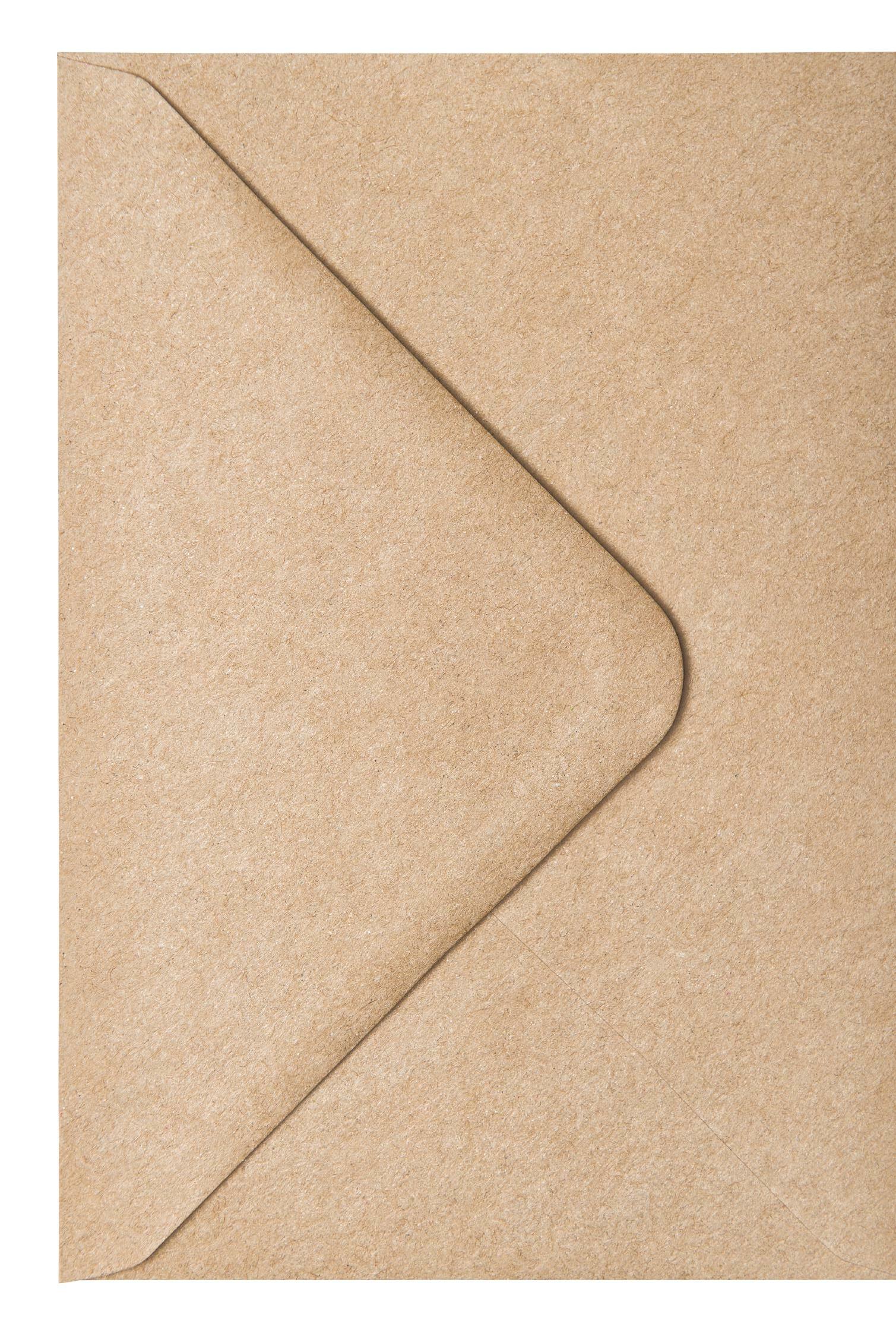

Bolger: The primary change for us as been an increased focus on getting clients to better forecast demand. Armed with good longer-range forecasts, our purchasing team has also been creative in how we’ve worked with our envelope suppliers, and thus far, we’ve met demand with only a few touch-andgo moments.
Modern Litho: We’ve seen more opportunity for our sales and CSR teams to showcase our expertise
with different formats and mailing guidelines in general.
Hederman Brothers: Our sales force has worked very hard to stay in front of our customers, letting them know the difficulties of finding envelopes (and paper). We encourage them to go ahead and enter orders months in advance so that we can secure the envelopes. We also have been converting envelopes in-house on small runs. We have run into a customer wanting a specialty envelope only to find out it’s not available. If we can locate the paper they want, we will print and convert.
Parkland Direct: We have started to see the paper market loosen some, but not to the same level it was a couple of years ago. While we did face challenges as paper became less readily available, we were able to navigate through even the tightest period. We credit this to a few things.
Most of our projects and focus are on larger volume, so that helps with buying power, especially when grouping several large projects together that are on the same type of paper.
Our production process calls for the type and size of paper the mills can produce right off their lines without
Industry insiders share tips to help work around the envelope shortage.
requiring secondary steps. So, most of what we buy is what mills like to produce.
To help things further, we consolidated the types of paper we purchase and warehouse. This limited options on the paper side but allowed us to continue to produce a steady supply of envelopes. We offer a variety of options on the print side, coatings and foiling/ embossing, which allows for huge creative freedom to make up where paper was limited.
Suttle-Straus: Because we worked through shortages with our clients last year, I find clients are not surprised that we are asking them to project their needs eight to10 months out. The custom envelopes we would normally print and send to a converter, we’ve had to change our mindset to engineer envelopes in reverse. We’ve looked across several clients and determined what we can pool together. We are now converting blank stock into those custom envelopes to have on hand before art design.
Have your customers changed their behavior in response to the envelope challenges?


LCP: The one thing we have in our favor is supply chain issues are everywhere, so our customers know this and are understanding. I continue to urge my customers to plan much further ahead than they are used to doing so that we stand the best chance to get the stock we need. I have found that being proactive and being an advocate for my customers is the best approach. It always has been, but even more so now.
Parkland Direct: Direct mail is winning big right now and working very well in tandem with digital marketing.
There are several the ories as to why (digital fatigue, the haptic con nection direct mail gives, etc.) We are finding that our clients want things that are very noticeable and represent their brands well in the mailbox. Because of this we have seen an uptick with embellishments like foil, embossing and coatings.
HBP, Inc.: Interestingly, mailing has increased. Clients have been very understanding and each one with a specific situation has mutually worked to come up with a solution. The point here is to reach out as early as possible and let them know the current circumstances and that you are doing everything to work out a solution.
Suttle-Straus: Clients who work on annual campaigns and rely heavily on direct mail understand the urgency in timely mailings. Everyone has been very receptive to moving up their timelines and starting planning earlier. We’ve never been this far ahead with creative design—it’s been a good thing. Rather than cutting it close to deadlines, getting out in front of printing early is refreshing.
SPC: Planning is key to success in this market. One healthcare company bypassed our planning warnings last year and struggled with producing their programs, ultimately splitting the work across multiple vendors. They missed many mail dates as paper and manufac turing time was not available. We have now secured a three-year contract for this work, allowing SPC to preplan these programs for the client.
Do you have any stories about innovation or strategy under pressure?
Hederman Brothers: Last year we took the initiative to go ahead and start buying envelopes as they became available
knowing that this year was going to be rough. Our relationship with our paper vendors is a partnership – they let us know when they receive shipments and give us the option to purchase. We have also used our relationships with other vendors to reach out to envelope convertors that we have not used in the past. We are casting a wider net.
network to continually test and quickly implement solutions during these challenging times. Expanding our footprint and addressing labor shortages to meet strong demand is now underway.
Modern Litho: We print a coil bound directory, 500 copies, for an association each year. Normally, we shrink-wrap the directory with chipboard and insert it into envelopes that are inkjetted for mailing. Of course, this year we couldn’t source the typical envelopes, or anything that really fit well in the same price range. We explored Tyvek envelopes, which were way too expensive. We took the piece to our in-house mailing expert, and asked if the directory could mail, shrink-wrapped with chipboard without the envelope. Sure enough, yes, it can!! We added a slipsheet to conceal the front cover for more discretion. When the customer was presented with this option, they were on board! No envelope cost—we just added a label to the outside with the mailing address. The result was a mailed directory, less cost to the customer and less work for our team. Win-win!
Lesson: always check mailing requirements; it might surprise you what is allowed or acceptable.
HBP, Inc.: We purchased an envelope company, as we saw early on where things were headed.

Cenveo: Cenveo has the unique advantage in the industry of having a national footprint of manufacturing locations, strategically located for receiving raw materials and shipping product. We there fore have the ability to ensure continuity of service to our customers by quickly pivoting to other plants when issues arise. Cenveo has also invested in state-of-the-art engineers located throughout our
SPC: In an effort to mitigate the major enve lope timing and availability issues, we proposed a new “hybrid” self-mailer format to a client who, up to this point, had all direct mail efforts mailed in envelopes. Their needs were complex, and we came up with a solution to create a self-mailer that contains two CR80 offer cards, ample messaging space, reply device to be perfed off, and a tipped-in BRE. Most of the production is completed “inline” on a web press, and the BRE is tipped in using an “offline’ fashion,” the combination of both is what we term “hybrid.” We even created the BREs as a side seam process on a finishing line, not on a tra ditional envelope machine. We have removed the need for any traditional envelope printing or con verting for this process, safeguarding if the indus try tightens further.
Suttle-Straus: We’ve gone away from putting dates/years on the envelope art and over-producing printed envelopes. Having custom blank envelopes on hand allows us to easily go back on press if they run short. Envelopes are now precious, so we cannot be tossing away expired printed inventory.
Security tint envelopes are a challenge, so if you must run an envelope on press for the return address, adding graphics/color that doubles as a security tint on the outside doesn’t add costs.

Our graphic design team has been innovating our envelope designs using just two colors with bleeds to avoid sending out for four-color converted envelopes. We are producing some beautiful envelopes that are proving four-color converted envelopes aren’t necessary. We’re also thinking outside the box with inkjet variable messaging in red or blue (instead of black) to add something unique to an envelope design.
Parkland Direct: One of our customers was unable to acquire a color paper for a reoccurring project they do and preferred not to change the format,
Always check mailing requirements; it might surprise you what is allowed or acceptable.

so they came to us for solutions. We were able to use white paper and imitate the print to match the colored paper they were using. It actually ended up saving on overall cost, and they were able to con tinue the program unchanged. We’ve also done similar things like this for linen papers, where an embossing can be applied to regular paper to imitate it.
Is there a quantity range where getting envelopes is easy, and a quantity where once you get over that number, it gets really hard? Is there a specific size or style that’s easier to acquire?
Bolger: All quantities and sizes are a chal lenge right now. Odd sizes are almost impossi ble to source. Even if we print the folio sheets to have them converted, we’re fighting for capacity and fighting the paper allocation battle. In short, nothing is easy to acquire. The best advice is plan well internally and with clients, remain flexible, and test every creative option you can think of.
LCP: Honestly, I can’t say it’s been a particu lar style or quantity. I will say the larger quantities tend to be more problematic. What’s also great is companies like Mohawk and Neenah have excellent envelope programs and it can open discussions with customers about exploring colored envelopes as an option. This costs more, but the added impact in the mail can’t be overlooked.
Parkland Direct: We have found that sticking to commonly used sizes (#10s, 6 x 9.5s, etc.) will help in getting projects turned faster. Again, we focus on larger volume, so for us usually the limita tions come from quantities being too low, not too high. However, on common sizes, many times we are able to work in shorter runs. The best thing someone can do in this market is to plan ahead and try to stick to that plan as best you can. But we’re in direct mail and that isn’t always possible or ideal for our customers, so we do have to remain nimble and ready to pivot if the need arises.
SPC: Quantities in the hundreds of thou sands or less are far easier to produce than larger quantities at the moment. Print demand typically dips toward the end of the fourth quarter—if that happens this year, that might open capacity for clients in Q1. Standard #10
envelopes will be the easiest to source as they are the most commonly produced envelope. Companies want to be efficient on their machines, so piggy backing on a future run with the same size and spec envelope can be helpful.

There were three recurring points that every one reiterated over and over in different ways throughout all of the interview responses I received, so I think it’s worth ending with these as a reminder of how to navigate (and win) during the envelope shortage:
Plan as far ahead as you possibly can. Customers have never been more willing to act early, and it’s making the process less chaotic and miserable.
● Flexibility
Show your customers different ways to achieve what they want, try new things, bring them solutions. The forced flexibility of the shortage means they may be open to trying new things that could even work better for them, so now is the time.

Be a problem solver and an advocate for your customer. Help them get what they want through creative sourcing, solutions and strategy. Now’s the time to show off.
I’m deeply grateful to the to the following indus try professionals who took the time to answer my questions and share their advice with us: Stephen White of Parkland Direct; Ryan LeFebvre of SPC; Cassandra Atchison of Modern Litho; Theresa Aide of Suttle-Straus; Dean Petrulakis of LCP; Eric Norman of Bolger; Terri Mascagni and Doug Hederman of Hederman Brothers; and Joe Wagner of HBP, Inc. Also thank you to Kate Cooper for helping to facilitate the Cenveo response. ●

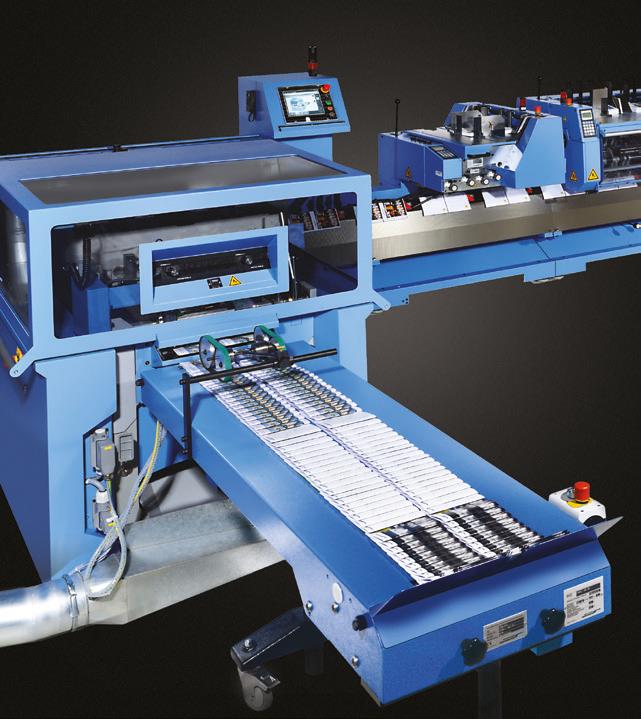

Ifyou have been on the Massachusetts Turnpike in recent months—or walked the streets of Boston—you may have noticed a proliferation of billboards and other signage for purveyors of cannabis products. Interestingly, more than a century ago, Massachusetts was the first U.S. state to criminalize recreational marijuana use. In 2008, the Bay State became the 18th state to legal ize medical marijuana, and in 2016 legalized recre ational marijuana use.
As of summer 2022, 19 states, as well as Washington D.C. and Guam, have legalized recreational marijuana use. When we cover this topic, it is usually in the context of packaging; while the substance itself may be legal or at least decriminalized, there are still a slew of regulations regarding how it can be packaged and sold.
With cannabis retail locations now popping up in the applicable states, we’re starting to see more and more signage advertising these locations and their products. And just as it is in packaging, regulations pertaining to cannabis signage are still in a bit of a “Wild West” stage and, as you can imagine, vary from state to state.

We are not going to go through each state individually, but there are some common denominators, and a lot of the rules that pertain to packaging also apply to signage. Indeed, both are usually considered part of the umbrella term “cannabis advertising,” at least as far as regulators are concerned.

In virtually all the states that have legalized cannabis use, one of the primary goals of advertising regulation is to avoid making it look attractive or appealing to under-21-year-olds. Another focus is to prevent false or misleading health claims (this is especially the case for medical marijuana).
In New York state, for example, if any claims are made in cannabis advertising/signage, verification of those claims must be provided, any individuals in advertisements must be actual patients and so on.
In Massachusetts, “Implementation of an Act for the Humanitarian Medical Use of Marijuana”






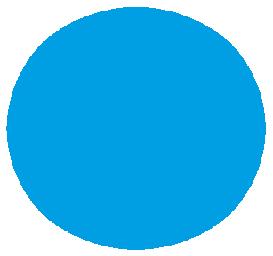
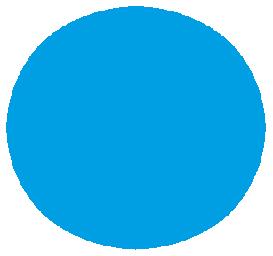


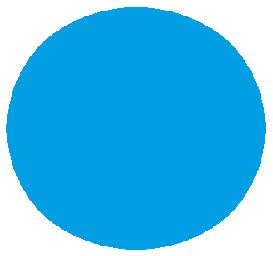

(https://bit.ly/3A9qkii) includes advertising requirements and prohibitions for Registered Marijuana Dispensaries (RMD), including:
● (1) An RMD may develop a logo to be used in labeling, signage and other materials. Use of medical symbols, images of marijuana, related paraphernalia and colloquial references to cannabis and marijuana are prohibited from use in this logo.
● (2) RMD external signage shall not be illu minated except for a period of 30 minutes before sundown until closing, and shall comply with local requirements regarding signage, provided however that the department may further specify minimum signage requirements. Neon signage is prohibited at all times.
● (3) An RMD shall not display on the exterior of the facility, advertisements for marijuana or any brand name, and may only identify the building by the registered name.
● (4) An RMD shall not utilize graphics related to marijuana or paraphernalia on the exterior of the RMD or the building in which the RMD is located.
Needless to say, a giant picture of Bob Marley’s face wreathed in smoke is also probably out of the question.
And so much for promotional items:
● (7) An RMD shall not produce any items for sale or promotional gifts, such as T-shirts or novelty items, bearing a symbol of or references to marijuana or MIPs, including the logo of the RMD.
In New York, the Cannabis Control Board has released its codes and regulations for “AdultUse Packaging and Labeling” (https://on.ny. gov/3PBnfgN) and has also specified where can nabis advertising/signage can and cannot be dis played. For example, such advertising is prohib ited at sporting and other events likely to draw under-21-year-olds.
Leafly has a comprehensive state-by state guide (https://bit.ly/3KaitFS) and they appear to be keeping it updated. Some other highlights, skimming through the list:
In Alaska “a retail marijuana store may have not more than three signs, visible to the general public from the public right-of way, that identify the retail marijuana store by its business name. A sign may be placed in the retail marijuana store’s window or attached to the outside of the licensed premises. The size of each sign may not exceed 4,800 square inches.” Signage or other out-of-home advertising is also prohibited within 1,000 feet of the perimeter of any “child-centered facility” like a school, daycare center, etc.
Likewise, in California, a licensee cannot “advertise or market marijuana or marijuana

products on an advertising sign within 1,000 feet of a daycare center, school providing instruction in kindergarten or any grades one through 12, playground or youth center.” The code also makes a point to note that interior signage is left pretty much alone, just so long as it is not intended to appeal to under-21-year-olds.
Colorado, arguably the most pot-positive of the states, prohibits cannabis signage to tout safety claims, and also prohibits signage “visible to members of the public from any street, sidewalk, park or other public place, including Advertising utilizing any of the following media: any billboard or other outdoor general advertising device; any sign mounted on a vehicle, any hand-held or other portable sign; or any handbill, leaflet or flier directly handed to any person in a public place, left upon a motor vehicle, or posted upon any public or private property without the consent of the property owner.”
Connecticut prohibits in cannabis advertising, “any statement, design, representation, picture or illustration that encourages or represents the use of marijuana for a condition other than a debilitat ing medical condition.” Boy, they are really no fun in the Nutmeg State. Connecticut this year also passed a law banning out-of-state cannabis sales— which meant that Massachusetts cannabis retail ers had to remove their billboards from Connecticut.
In Washington state, “licensees are limited to two signs (maximum 1600 sq. inches) that are permanently affixed to a building or other structure on the licensed premises. Other forms of signage/
Richard Romano has been writing about the graphic communications industry for 20 years. He is an industry analyst and author or coauthor of more than half a dozen books.

outdoor advertising are prohibited, such as sign spinners, sandwich boards, inflatables, persons in costume, etc.” Information on the signage must be limited to name, location and type of business.


Now, remember, these are only regulations at the state level, and indi vidual municipalities may be more strict. And it also bears mentioning that cannabis is still illegal at the federal level. This can cause problems if, for example, content-based enforcement of signage regu lations went to court, where protections against contentbased regulations are based on federal law and Supreme Court precedents. So challenges to regulations on cannabis signage could ultimately end up in federal court—where can nabis remains illegal and a con trolled substance. Very little of this has actually happened yet, but could at some point become an issue.
As I always point out when I write about sign codes, technically it is the responsibility of the sign owner—the customer— to comply with relevant sign codes, but as a sign business, having an in-depth knowledge of the regulations in the geo graphic area(s) you serve can be a valuable “added service” you can offer customers. You’re in a good position to potentially save them a lot of time, money and legal hassles.

As more cannabis businesses open up shop, they’ll need signage—on-premises and off—and as the need to distinguish themselves from competing businesses gets more acute, it may become easier to fall afoul of advertising and signage restrictions. ●

We are consultants that help digital embellishment users become more successful designing, operating, selling and marketing their digitally embellished print.
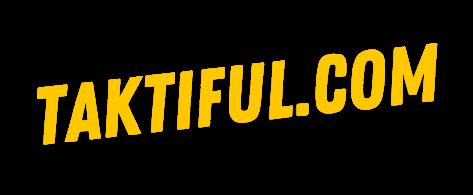



ALREADY INVESTED IN THE TECHNOLOGY
NOW INVEST IN YOUR SUCCESS
Design & Equipment Operation
& Integration
and Business Development
and Messaging
Embellishment Expertise

 By Richard Romano
By Richard Romano
June2022 shipments came in at $6.98 billion, up a tad from May’s $6.96 billion, making this the best June the industry has had since 2019—although it’s well below that month’s $7.54 billion.
Shipments in June traditionally decline, but we’re happy to see this year break with tradition. The data here is bolstered by anecdotal evidence— printers generally say they are extremely busy, hampered only by challenges in getting paper and other supplies.
And, actually, the fact that so many printers talk about the challenges they have in getting paper is a good sign, as it indicates that there is a great demand for print from customers. And, ultimately, it’s demand for print more than anything that deter mines the health of the industry.
At mid-year, we have exceeded 2021’s shipments—January to June shipments for 2022 are at $40.73 billion, a bit over 2021’s $40.55 billion. We

can certainly lose ground in the second half of the year, but so far, shipments data for 2022 is very encouraging.
One continues to get the sense that the industry’s attempts at recruiting production staff are succeeding. In July 2022, all printing employ ment was up 0.7% from June, with non-production employment up 1.8%, and production employment was up 0.2%. Publishing employment was up 2.5% in June, but only up 0.5% in July.
Digging into the specific publishing segments (the reporting of which lags a month), things continue to stay in a bit of a holding pattern. From May to June, periodical publishing employment was up 0.6%, while newspaper publishing employment was down 1.2%.
The creative markets were doing about the same. Graphic design employment was down 0.2% from to June, ad agencies were up 1.5%, and public relations—which had been down 0.6% in May—was up 1.6% in June. Direct mail advertising employment has been see-sawing for the past year, but in June 2022 was up 0.8%.
As for June employment in general, according to the BLS in their Aug. 5 report:
Total nonfarm payroll employment rose by 528,000 in July, and the unemployment rate edged down to 3.5%, the U.S. Bureau of Labor Statistics reported today. Job growth was widespread, led by gains in leisure and
hospitality, professional and business services and health care. Both total nonfarm employment and the unemploy ment rate have returned to their February 2020 pre-pan demic levels.
The change in total nonfarm payroll employment for May was revised up by 2,000, from +384,000 to +386,000, and the change for June was revised up by 26,000, from +372,000 to +398,000. With these revisions, employment in May and June combined is 28,000 higher than previously reported.

The labor force participation rate ticked down from 62.2% in June to 62.1% in July, and the employ ment-to-population ratio increased from 59.9% to 60.0%. The labor force participation rate for 24–54-year-olds also increased from 82.3% to 82.4%.

Here’s what’s flummoxing economists.
Unemployment is at a record low (3.5%). That’s good, right? And yet, in late July, the Bureau of Economic Analysis (BEA) released its advance esti mate of Q2 2022 GDP and found that it decreased at an annual rate of 0.9%. And in the first quarter, they revised the real GDP decrease from -1.4% to -1.6%. That’s bad, right? Then, of course, we had infla tion—but the good news in August was that the BLS found that July’s CPI was
unchanged from June. Now, we don’t know what’s going to happen between the time I write this and the time you read this, so we’ll either be showing clear signs of being out of the inflationary woods or back to square one.
So, the $24.9 tril lion question is, does all this indicate that we are in, or near, a recession? Or not…? Despite the Fed’s best efforts to trigger one, the consensus is that we are not, as other economic indicators, such as consumer spending (up 1.0% annu alized rate) are pretty positive.
Read More… Find article at PrintingNews. com/21160600
And employees also still feel like they can quit their jobs, as the quit rate is still well above historical averages. Whether this suggests the “Great Resignation” marches on or is over is still open for debate.
Economics blog, “Calculated Risk,” pointed out at the end of July that “residential investment as a percent of GDP is useful in predicting a Fed induced recession. RI as a percent of GDP usually turns down well in advance of a recession. This will be something to watch.”

In Q2, RI decreased at a -14.0% annual rate, while it had been by about the same amount in Q1. So, as they say, this is a data point to watch.
Because, as we all know, as goes the economy, so goes the printing industry. ●
 By Jennifer Matt
By Jennifer Matt
The labor market continues to be a major challenge, especially for small- and medium-sized businesses. The “Great Resignation,” beginning in 2021, resulted in en masse voluntary resignations, which has significantly altered the workforce.
No need to debate what the future will hold. We know that we have
to find a way to succeed in spite of the challenges in front of us today. We have more work to do than labor to do it. We have to start looking at our work loads differently, because “throwing more labor” at workload challenges is no longer a valid solution.
Adding people is not always the easiest solution, but it has allowed us to continue to have ill-defined processes and manual steps in our workflows. Adding people just integrates them into our inef ficient workflows with the hope that more manual labor generates more work production.
This is why you see customer service teams blos soming past 10 people, and prepress departments continuing to grow.
Without workflow efficiencies, you have to keep throwing labor at the problem, which actually

makes quality control and management even harder. The more people you have doing similar tasks, the more variation, more management and more overhead you build into your business. This also puts you in a position where making changes is difficult. Change management with a team of 10 is exponentially more difficult than change management with a team of five.
article at PrintingNews. com/21160620
Scaling your workload via automation and software is a different kind of solution that requires a different approach. It requires you or someone on your team to identify the different kinds of work being done, so that it can be solved in different ways.
There are “buckets” of work in your business that require different skills and are more or less


applicable to be automated or solved program matically. This means you might shave work off all your customer service team by automating a certain task, rather than simply adding another full head count to customer service that does a little bit of everything.
Start thinking about scaling by incrementally giving your existing team tools that make them more efficient.
All automation and optimization using software relies on access to accurate and up-to-date information. All roads lead back to your Print MIS and the data stored there.

When you want to streamline your operations and do this without humans who can think their way around errant data, you have to do some housekeeping before you can implement programmatic workflows.
We take for granted how much brain power we rely on in our workflows today, because we solve scale issues with more people. More brains don’t force us to do the housekeeping. Less humans with more work requires you to clean up your data, identify workflows that could be optimized and then automated, with the end result that the humans you have can produce more work.
There has always been a focus in the print industry on the production floor. We are obsessed with shaving minutes off of press times, finishing steps, etc. My personal
obsession is with the business processes in the carpeted area of the print business, where I look to shave off days in the workflow. For most printers, a job spends more time in the carpeted area than on the production floor. Initial inquiry to the press can be days or weeks.
This calendar time matters because it makes production times tighter, slows cash flows and eats up customer expectations. You might not calculate turn times until the job is ready for printing, but customers consider turn-time calculations starting from the minute they utter their desire for their illdefined job, with unapproved artwork and out-ofstock raw materials.
Once you accept that labor issues are here to stay, you can start solving your scale challenges with more innovative and sustainable solutions. Software is the primary tool deployed, but it requires a major move from brain power, which can theoretically handle all exceptions to pattern recognition and consistency. It takes longer to set up an automated workflow, but the return is 10-fold, because you save time every single time it runs. The ROI is a gift that keeps on giving. ●


spoke with senior managers at three distinctly different print operations to get their perspective on staffing and the changes they have made to fill open positions and grow their business.
● Bruce Waldron, manager of publication services at Dairyland Power Cooperative, runs an in-plant operation with a staff of 11 serving the print and mailing needs for a 24-member utility cooperative.
● Al Kennickell, president of Kennickell Group in Savannah, Ga., runs a 60-person commer cial print company providing print, mail, wide and grand format graphics and fulfillment services.
● Randy Weiler is senior director of postal affairs, logistics & strategy at SPC, a direct mail company with over 400 employees. SPC provides creative, design, print, mail and omni channel direct marketing services.

Kennickell Group is in a significantly better posi tion with staffing this spring compared to last year. They have six open positions and are getting a fair
number of applicants. Last year job postings languished with no applicants. Kennickell is always looking to hire competent installers for grand format signage and vehicle wraps. He has found print and bindery positions are easier to fill.
Waldron’s operation has been fully staffed since the beginning of the year. Dairyland had two vacancies for most of last year. Waldron expanded the job posting to include social media posts on LinkedIn and Facebook. With a social media pres ence, they attracted many more candidates and filled the positions.
SPC has also seen some improvements in filling open positions in 2022 over 2021. Last year they experienced bidding wars for tempo rary help and conducted national searches for skilled offset press operators. SPC currently has 30 open positions, as they are staffing up for an additional shift to handle their fall spike in direct mail campaigns. At one point last year they had 80 open positions to fill.
Weiler and Kennickell have increased hourly rates for the new hires and then increased rates for tenured staff in the same role. This philosophy rewarded their
tenured staff, maintained equity in pay scales, and allowed them to fill open positions. SPC also increased the shift premiums they pay to second- and third-shift employees to keep positions filled.
Dairyland Power has experienced local com petition in hiring unskilled labor. They have not been able to raise hourly rates as quickly as local companies. Their extensive benefits and retire ment package has made them more competitive for new hires.
Kennickell recently installed a Konica Minolta KM1 inkjet press, which has changed their production process. With a streamlined workflow they are moving more jobs from offset to inkjet. Press operators were trained and embraced the digital workflow process for the KM1. Now the production team
plans jobs with an inkjet first mentality.
Kennickell described how the 1200 DPI pro duces better image quality than offset, and the consistency is predictable without needing a highly skilled press operator.
The paper supply challenges have also impacted how they use inkjet. Where clients may want longer run lengths of 10k, Kennickell suggests shorter runs of 2500 on inkjet so they can get the paper needed,


and enable clients to change their content more frequently.


In 2021, Dairyland Power installed a Canon IX and eliminated one of their two offset presses. They now run about 90% of their jobs on inkjet and use offset as a backup. Waldron said that they no longer cross train staff on offset. As their press operators are nearing retirement age, they plan to move all production to digital presses.



SPC has made significant investments in four highspeed Bluecrest inserters that run twice as fast as their older models. The biggest benefit is less labor needed to get the same volume of work to completion. They have made other investments in bindery to automate tasks and reduce labor needed for finishing.
SPC has made significant inkjet investments, including a Canon Océ ProStream. And offset printing is still critical to SPC’s overall produc tion process. They have hired new employ ees to run digital equipment and to upgrade


their skills, and have invested in training them to run offset presses. Weiler expressed some concern with the global loss of knowledge in the art of operat ing offset equipment as more press operators near retirement.
Kennickell Group is investing in bindery equipment that doesn’t need highly skilled operators. More automated equipment means more people can learn how to run the equipment well. Their investment philosophy has changed to focus on new equipment that automates work and doesn’t require craftsmanship to operate.
Dairyland Power has formed new partnerships to better serve its members. They have begun outsourcing longer run offset jobs to printers with more offset capabilities. And they have also begun a growth plan by bringing in new work from government and non-profit organizations that is a better fit for their digital production capabilities. Waldron said they will invest in a new CRM and MIS platform, which will allow them to support their growth with new customers without needing additional staff in client service.
Kennickell and Weiler commented that the one benefit of the labor shortages and paper challenges is that low-cost, low-value print mail providers will likely not survive. Astute investments in inkjet have paid off. In companies of all sizes, inkjet provides increased flexibility in hiring and manag ing challenges in paper supply while driving increased throughput in production. ●
Ensure the future success of your organization by attending the most dynamic and comprehensive printing event in the world. Connect with industry friends, discover new solutions, and learn how to best optimize your business. Visit your favorite vendors and uncover new ones — infinite opportunities await you!
















For more information, visit PrintingNews.com/21141082


















 PRESENTED BY
PRESENTED BY
What is the value of augmented reality in the world of marketing? For Joe Zeff, president of Joe Zeff Design in Pittsburgh, it’s to help his customers tell better stories.
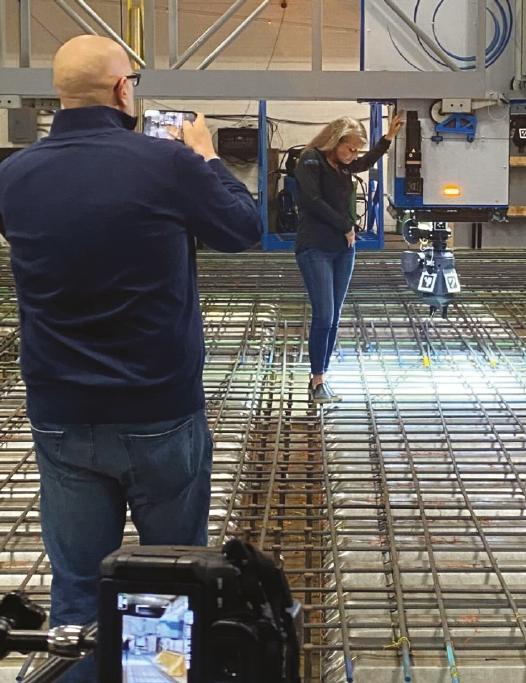

As a former graphic journalist at both Time and The New York Times, Zeff’s responsibility was to distill the week’s news stories into visual representations. Today, he takes the same skill and applies it to the world of marketing.
Clients include AT&T, Nike and American Express Global Business Travel, as well as one company very much a part of the news these days — Astrobotics, Inc., which created the landing module for the Artemis rocket.
Zeff has also been the designer and developer of some of the world’s first iPad apps. Zeff’s passion for technology has put him squarely in the middle of a world that would eventually become the heart of much of his business.
Zeff became interested in AR about five years ago while working with Bigtincan, an AR platform he used to create complex AR scenes. One of Bigtincan’s clients was (and still is) T-Mobile. Zeff was asked to create a proof of concept to show how sales associates could present in-store products to customers, as well as provide a way for customers to learn more about products on their own.
As part of this project, Zeff created an AR experience to promote T-Mobile’s Family Mode connected service.
When the salesperson hovered over the package with their iPad, the box would come to life with interactive buttons and video. As the iPad hovered, the buttons would play like a slide
show—“set limits,” “sched ule downtime,” “set bed times”—and the user could touch each button to bring up more information, including a video.
Since then, Zeff has used Bigtincan to develop AR expe riences for other clients.
Many of these experiences have been used to engage booth visitors at trade shows and conferences, where people’s attention is short and it takes that “something extra” to draw them in. AR provides the opportunity to open what are often “black box” technologies and better tell the story of what is behind the curtain.
Zeff gives an example from HIMSS19, a global health conference and exhibition, where AT&T was showing its connected devices.
“To tell their story, AT&T had brought several IoT devices that were powered by AT&T transmitters, antennae and equipment, but you wouldn’t know that simply by looking at the devices sitting on that table,” Zeff said. “I created an AR experience that allowed AT&T employees to point to one of these objects and let people see beneath the surface. They see where the transmitters existed, where the accelerometer was placed, and how those devices connected to things outside of the room.”
AR took the technology from being a “black box” to telling a compelling story.
In these early days of AR, all of the experiences Zeff created used Bigtincan. Today, he also uses two mobile-browser-based platforms, ZappAR and WorldViewAR from RealityBLU, both of which use
WebAR, or mobilebrowser-based AR, to access AR experiences via QR Code.

“The ability to give AR without an app was game changing,” Zeff said. “Suddenly anyone could access these experiences. If you can scan a QR Code, you can engage with augmented reality. That has opened up an entirely new world of marketing.”


Zeff uses RealityBLU for creating holographic twins (holotwins), 3D objects and virtual portals that transport viewers into different times and places. He uses ZappAR to bring posters and other printed materials to life.
When it comes to living posters, Zeff points to a project he created for Advanced Construction Robotics, which was looking to increase engagement at Automate, a robotics industry conference held by the Association for Advancing Automation. For the conference, Zeff created a lifesized cut-out of Danielle Proctor, CEO of Advanced Construction Robotics, that when scanned, came to life and started talking.
But one of the most exciting projects Zeff has had the opportunity to work on is for Astrobotics lunar module.

As part of the pre-launch publicity, Zeff had the opportunity to once again work with Time magazine and use RealityBLU’s WorldViewAR platform to help tell the story of Astrobotics’ Peregrine lander (June 2022 issue). The article describes the lander, packed with 24 instruments and other payloads from five different countries, and its journey to the moon. To round out the story, Zeff created
an infographic about the lander with a QR Code that, when scanned, lets readers use AR to place a 3D model of the lander in the room with them. Once the AR object is placed, readers can walk around the model, look underneath it, and examine it as if the lander were right there.
“Not only can they read about the lander, but they can interact with the 3D model, helping to deepen their understanding and connection to the technology,” Zeff said.
Zeff’s passion for holotwins is reflected in his own use of holotwins to promote his business.
Zeff has created holotwins for multiple clients, including a proof of concept for the Pittsburg Zoo. In the project, Zeff created a series of virtual zookeepers (holotwins) in front of each display.
He has also created his own storytelling platform called Augmented Pittsburgh to help residents and visitors more deeply engage with the city.
“The first two deployments roll out this fall,” he said. “A partnership with Acrisure and the Pittsburgh Post-Gazette to deliver weekly sportscasts via augmented reality, and a partnership with the City of Pittsburgh and Bike Share Pittsburgh to place holotwins throughout the city to help people better understand their transportation options.”
Zeff has several other partnerships set to launch in early 2023.
Zeff continues to use AR to promote his business. If you live in the Pittsburg area, you’ll see his QR Code on posters in bus shelters, on the sides of buses and on billboards along the highway. Truly, he’s everywhere.
“I’ve done a lot of self-promotion to get ideas
DG3 is a full-service solutions provider serving primarily the pharmaceutical and financial markets. Find video here: www.printingnews.com/21160441
Canon Solutions America’s Patrick Donigain provides an overview of Canon’s latest wide-format and signage. Find video here: www.printingnews.com/21160453

This week Warren talks to Mike Lewis, Managed Services Account Executive for Smartpress, the online division of The Bernard Group.
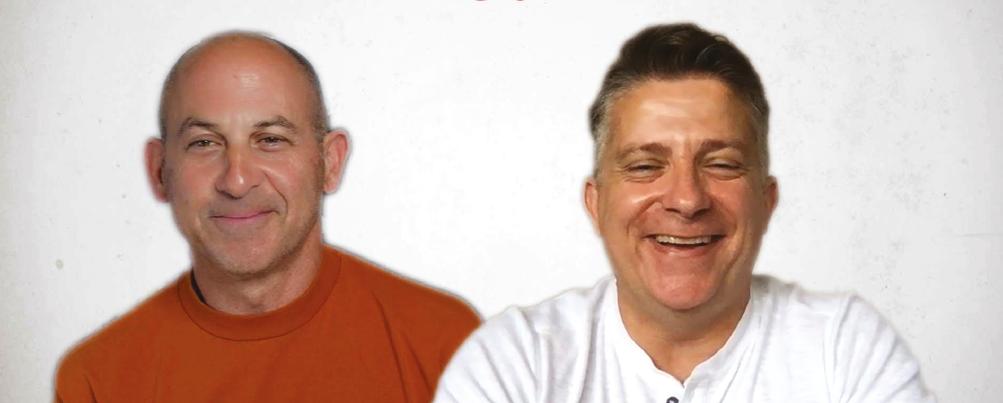
Find video here: www.printingnews.com/21160569
Jon Buddington of More Vang talks about the challenges he encountered as he expanded his business. Find video here: www.printingnews.com/21160594
Eric Blohm, President of Freedom Graphic Systems, talks to David Zwang at the recent thINK Forum. Freedom is a data-driven direct marketing company.

Find video here: www.printingnews.com/21160492

Richard Romano talks to Fred Collins of Mood Media about the benefits of digital signage for print and sign business customers.


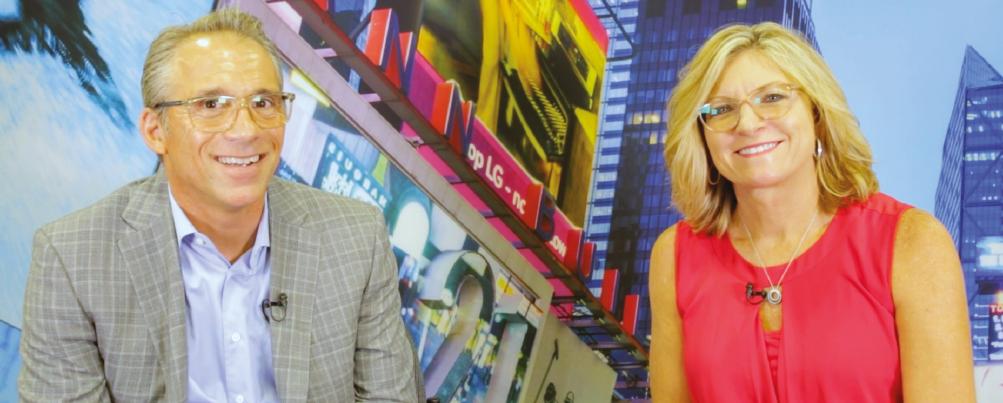
Find video here: www.printingnews.com/21160493
Scodix’s Jason Rollo provides an update on Scodix’s mis sion to digitize, and become a leader in print decoration. Find video here: www.printingnews.com/21160650
Standard Finishing’s Mark Hunt, Tecnau’s Scott Peterson, Müller Martini’s Michael Wing, and Solimar Systems’ Jonathan Malone-McGrew, on their participation.
Find video here: www.printingnews.com/21160514
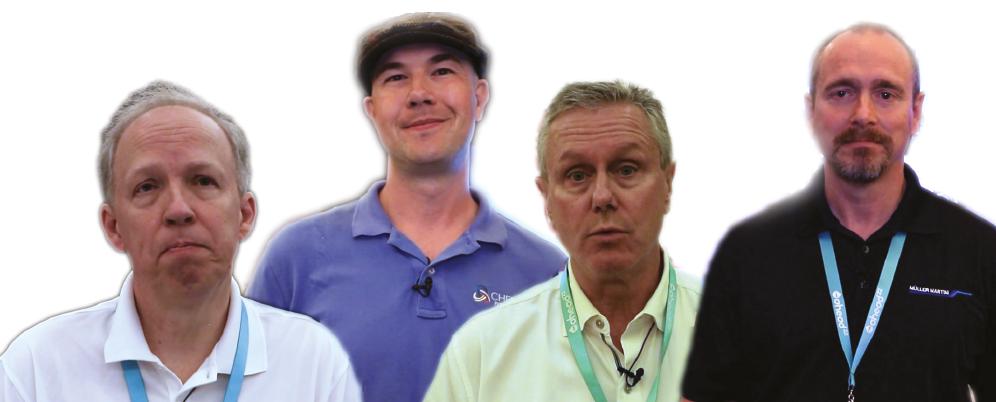
Today marks the one-year anniversary of Spoonflower’s acquisition by Shutterfly. Senior Editor Cary Sherburne interviews Michael Jones, Spoonflower CEO.

Find video here: www.printingnews.com/21160516
Impact’s Scott Williams on Improving Efficiency David Zwang talks to Scott Williams, Director of Workflow Automation and Systems at Impact Mailing, a 40-year-old, 200-employee, family-owned business.

Find video here: www.printingnews.com/21160478
Americas Print Show Kicks Off in Columbus, Ohio!
WhatTheyThink’s Richard Romano speaks with Americas Print Show President Jim Cunningham. Hear Jim talk about how the show came about, future plans, etc.


Find video here: www.printingnews.com/21160579
Amado Lara on New Additions to Roland’s Wide-Format Printer Portfolio
Richard Romano talks to Amado Lara, Director of Sales for Roland DGA Corporation.

Find video here: www.printingnews.com/21160479
Kary Radestock of Hippo Premium Packaging talks with Kelley Holmes about building a print and packaging business serving the growing cannabis industry. Find video here: www.printingnews.com/21160606
Brian Balow, VP, Integrated Production Solutions, Ricoh, talks about the Show, held August 17 to 19.

Find video here: www.printingnews.com/21160651
Joe Matthews, CEO of Independent Publishers Group, family-owned for 50 years, talks to David Zwang. Find video here: www.printingnews.com/21160503
Quantum Group’s Cheryl Kahanek talks with Kelley Holmes about the company’s evolution from a commercial printer into more of a direct mail company.

Find video here: www.printingnews.com/21160635

The activity of looking up at the stars and objects in space as a hobby, as part of scientific study or as part of astrology.
I don’t have much use for astrology, or much time for another hobby. But I do think there’s an opportunity for you to engage in scientific study of stars to improve your business.
I’m not talking about those shining things up in the night sky. I’m talking about people who do their jobs well. Hopefully, some of them work for you now, but your study shouldn’t be limited there. In my experience, there are stars all around.

I got some very good advice from my first sales manager at Moore Business Forms. He told me to pay attention when people were trying to sell to me. He promised I would learn both positive and negative lessons from that exercise, and he was right.
On the positive side, I learned that most of the thoughtful and consultative sales strategies that worked on me would also work for me. On the other side, I learned how not to be a salesjerk from a whole lot of salesjerks.
My experience suggests that the average number of salespeople per printing company in our segment of the industry is some fraction between one and two. The number of people calling on each printing company, trying to sell you things, is signifi cantly larger.

Pay as much attention to how they sell as to what they sell, and try to extend what you learn to the rest of your sales team.
You could ask the best and the worst of the salespeople calling on you to spend time with your own salespeople.
“I’d like you to spend 15 minutes with my salesperson, just explaining your philoso phy of selling. That would be a way to bring value to my business, if you’d be interested.”
Read More… Find article at PrintingNews. com/21160700
The critical second stage is for you to review each conversation with your salesperson, focusing on the lessons, positive or negative, that you hoped they’d learn from each encounter.
Now let’s consider the rest of your team. Start by giving them each a “bright star” rating on a scale of one to 10. Your best employees will (hopefully) be in the eight to 10 range.
What is it about them that led to these high scores? Obviously it’s some combination of talent and attitude, but don’t be satisfied with a surfacelevel perception. What exactly do you value about each employee?
A printer once told me she wished she could clone her best employees. I told her she had the right idea, but the wrong terminology. “What you can do,” I said, “is model your desired behaviors and motivate towards them.”
Motivation starts with measurement and feedback. “I’ve rated you a six in this area. Let’s focus on that for the next 30 days, with the goal of getting you from a six to an eight. We’ll meet every week to talk about your progress. I’ll let you know how you’re doing, and we’ll celebrate when you get there.”
Navigation is the science of getting from one place to another. Early explorers navigated by those bright objects in the sky. I’m suggesting that you use human stars to set destinations/expectations for your employees. ●
Dave Fellman is the president of David Fellman & Associates, a sales and marketing consulting firm serving numerous segments of the graphic arts industry. Contact him at dmf@davefellman.com





W e caught up with Francis McMahon, executive vice president at Canon Solutions America, Production Print Solutions, to talk about Canon’s growth areas, tease some new products and technologies, and explain how using the Grateful Dead as a business model has helped Canon succeed in the production inkjet market.
WhatTheyThink: Francis, thanks for catching up with us. Let’s start with Canon’s inkjet market share and the places where you’re seeing growth.
Francis McMahon: We completed 2021 with 45% market share—specifically, high-volume inkjet market share, which is really all we track here. We’ve been tracking it for about the last 10-and-a-half years. In total, that would be the sheetfed varioPRINT iX products, as well as all of our web-fed products— the ProStream and the ColorStream platforms.
We’re very pleased overall with our market share. Most importantly, in 2020, we had 32% market share, so we had a 13% increase in 2021. We’ve been successful with our traditional customers, but we’ve also had a lot of success—especially with sheetfed inkjet—getting into accounts for the first time. For many years, we’ve been successful in direct mail and transactional print, and really for the last three years or so, we had to build a brand in commercial print markets, build some confidence, and gain awareness and we’re now at the point where people want an iX, they trust Canon and they know about our service.
But that wasn’t always the case. Three years ago, when you went into a photo specialty account or you went to a commercial printer, they said, “We’ve heard of Canon, but what can
you guys do for us?” Today it’s, “Oh, we need to get Canon in here as a part of the process and evaluate their products.” So the growth is really coming from the commercial print and the photo specialty side. A lot of it is com petitive replacement.
WTT: In what way?
FM: The iX presses in particular are good replacements for toner, and customers have been waiting forever for the quality advantage on inkjet vs. toner to come, and it just hadn’t been there. Now it’s there with the iX, and there are two big advantages.
One is the overall running cost of inkjet, but the bigger part is, with the labor market in dis array, customers can’t get labor the way that they used to, so our advantage is that our products are so simple to use. You can put one operator on two or three iXs, and if that opera tor calls in sick, somebody else can figure out the iX pretty quickly. You don’t need this massive skill set to operate our equipment. We’re finding that more customers are anxious to get products like the ProStream and the iX, simply because they are simpler to run, and customers have to prepare for having less people—and less technical people.
WTT: How do you see the competition on the sheetfed side?
FM: When we look at the sheetfed side, we’ve earned in our category about 50% market share. Now, to be fair, Konica Minolta has their B2 press, so you’re only going to sell so many B2s, and there’s Fujifilm, which is more of a simplex unit. And then you have Xerox doing very well in sheetfed. One of the advantages that Xerox has is a smaller footprint to sell into in-plants. So we have not seen a lot of growth in in-plants on the inkjet side, because our footprint has not been as easy for them to
accommodate compared to some of the smaller devices. When you look at our presence in toner, like the varioPRINT TITANs and the imagePRESS, we do extremely well in in-plants, but the physical size of our inkjet products has not been that easy for in-plants to accommodate, although obviously some in-plants have larger locations than others.
WTT: And on the continuous-feed side?
FM: On the web-fed side, in 2021, we had 42% market share, up from 36%. Screen, Ricoh and HP have viable products and they’re doing a good job. I think there’s plenty of opportunity for everybody, but we’re very pleased to see that we’ve remained number one—and not just remained number one, but picked up significant share.
One final comment I’ll make on market share overall is that we probably could have done better. Our backlog on iXs right now is 30 machines that haven’t been placed just yet.
WTT: The last time we spoke you had said that orders were coming in so fast that getting them built was a challenge.
FM: We had excellent installations in the first half of the year and now we’ve got another 30 machines ready to go. And on the web-fed side, we have about 10 ProStreams ready to go and about another 48 ColorStreams, which are new and used, ready to go. So the backlog is excellent. Assuming we can get all the products installed this year—and orders are still coming in—I would expect, from a revenue perspective, to have our best year ever. 2019 was our best year, but I think we’re going to overachieve that by as much as 10–15%.
WTT: There are obviously different technologies out there, and some of them are better suited for different environments, which is likely driving market share. Can you talk about the ROI of investing in Canon inkjet vs. some of the others—everything from training and servicing machines, all the support and so on?
FM: In terms of the ROI conversation, when you look at hard dollars, I would say all of us are pretty much similar in terms of the total ROI, meaning some of us may charge differently for ink vs. service and parts than others, but in the end, it all comes out in the wash. The reason we come out ahead isn’t so much on pricing or the actual hard-dollar ROI,
but on all the intangibles. And that is our service organization offering anything from 5 x 8 to 24/7 and the reputation of our service organization just to show up very quickly and being very competent in servicing our products.

The other thing is the uptime of our products. While we have a wonderful service organization when the products do go down, the overall reliability of the machines means we’re maybe getting more hours of uptime and overall reliability than some of the other competitors. Then you’ve got things like the onsite training that we do. I think that’s a big part of how the customer views who to do business with.
WTT: And your Project 360 team.
FM: When we put a machine in, we have a team camp out there for a few weeks, and their whole job is to make sure that the operators are really competent with the machine, so they know how to do basic maintenance with the machine, but most importantly, they know how to transition a job over. It’s not like they’re running a particular job for the first time ever; they’ve been running it on some other type of product, and now they need to know the best, most efficient and cost-effective way to run it on this new machine that they just purchased from us. So we have a team that stays there and helps them through this transition period.
All this handholding that we do is a big component of it, and the other component is everything that we do afterward—everything we do through the thINK Inkjet User Community as well as throughout the year, and all the other resources that we offer. We’re constantly there to help the customer. And I think they feel it.
WTT: I was just at one of your customer sites and they had an early generation ColorStream. It still had the Océ kit, and it was a workhorse and it still is. It’s still pumping out volume. When you invest in that, it seems like there’s a lot of support to keep those machines running.
FM: One of the things that I learned through being a big Grateful Dead fan was that the band wasn’t there to make money or to get rich. That was never the purpose. The purpose was to provide an

experience for all these people that appreciated what they were doing and to always focus on them. The big thing for them was they wanted every single person in the audience to feel as if they were playing to them. So there could be 40,000 people there, but they wanted each person to have that level of experience.
I’ve taken that philosophy and tried to get that through our organization, so that every customer we visit should feel like Canon is in business just for them, so all the support that we give to them, the way we treat them, the products that we provide, and the training and the service and the marketing—they feel like it’s just for them. And if we do that, then you can take care of the rest.
The Grateful Dead had this huge obligation because they had hundreds of people supporting the effort in the back office and they had to feed those families. But they knew that if they just provided that experience to the customer—to the fan—then the rest would take care of itself. That model is really working for us—that is, just take care of the customer, period.
WTT: That’s a great way to put it. Switching gears a little, I understand that you just returned from one of Canon’s R&D centers. Is there anything that we can get an update on?
FM: I just got back from Venlo and what I can share with you now is I actually saw what’s coming—meaning it’s not just something on a piece of paper. I saw it, I witnessed it, and I saw how far along they are.
On the sheetfed side, we very much understand that—as I mentioned earlier—it’s been hard for us to get into in-plants with inkjet due to the physical size of our machines. That’s something really important to us because we believe the in-plant market is an important one, and they’re calling on Canon for the toner products to coexist with inkjet.
The B2 format is also something we think is an opportunity. Those are on the sheetfed side. On the continuous-feed side, we’ve also had comments from customers about the physical size of the ProStream. With inkjet, whether it’s ours or anyone else’s, the reason these machines are so big is the drying, and nobody’s quite figured all of that out just yet. That is a major goal of Canon, and
from both the continuous-feed side and the sheetfed side, size matters for some of our accounts. So I think we’re going to figure that out pretty quickly.
The last thing I’ll point out is that commercial print and labels are important growth areas for us. I talked about commercial earlier, but for label and packaging, without giving too much detail, I was at the factories and I see progress and output on materials that we’ve never printed on before. It’s still early stages, but I expect Canon to continually move in this direction.
WTT: With all the pressure that’s happened to the industry since COVID, and now it seems there are never-ending challenges like paper shortages, logistics issues, postage increases, etc. What makes you optimistic? As the song says, “Once in a while you get shown the light/In the strangest of places If you look at it right.” Where do you see the light?
FM: There’s a lot of frustration out there, but let me tell you where I get shown the light. There is so much work out there and people still very much believe in the value of print communications. Customers tell me they’re reaping the highest profits they’ve ever had. And, yes, they’re seeing increases from their vendors, they’re seeing increases in postage, increases on paper, but they’re able to pass on those costs because the value of the services they’re providing is still very good.
It will probably be at least a full year, maybe a year-and-a-half, before we start seeing things get to some level of predictability. I don’t know if we’re ever going to get back to where we were. The paper industry is scary—you’ve got paper vendors talking about not even investing anymore in paper and going straight to brown and to packaging. There’s a short age of envelopes, and that creates difficulties for direct mailers. But they’re all getting very creative in how they communicate. I think the big thing is that the volumes are there. Our customers are running more volume than they did in 2019. Our customers are telling us that, from a profitability perspective, last year was one of their most profitable years, and this year may be their most profitable. ●
To read the full interview including Canon’s investments in industrial print and packaging visit

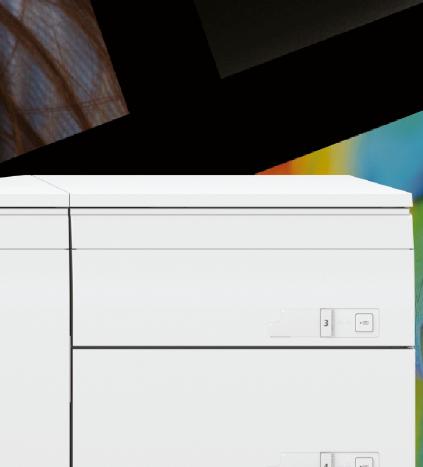

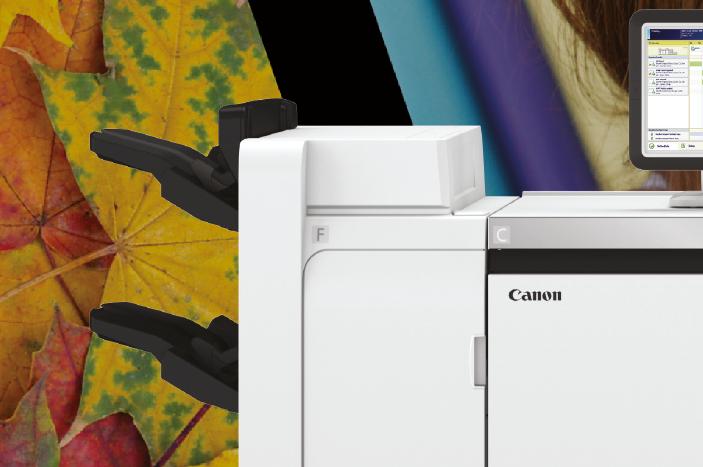


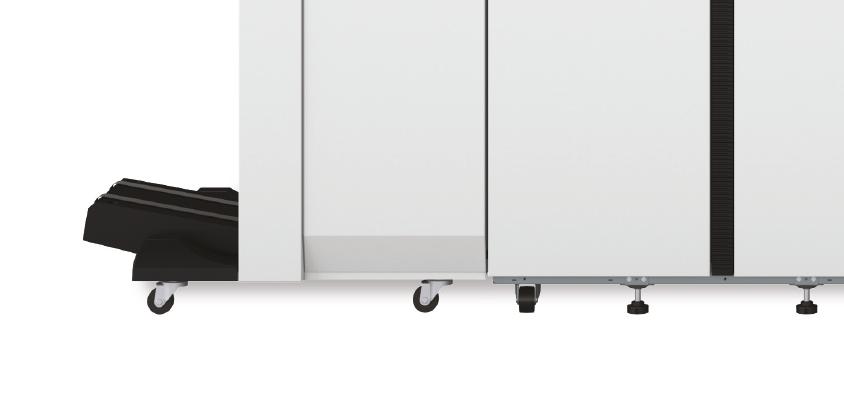

Legalized cannabis has budded into a formidable industry, growing into a bigger market each year. In 2021, it was valued at nearly $11 billion, with CAGR projections of nearly 15% through 2030. The cannabis packaging market alone was worth half a billion USD in 2021 and is expected to reach over $1.6 billion by 2024.
Sparking this boom has been a shift in perspec tive – of both consumer and government. The sheer volume of cannabis research that now exists high lighting its benefits, has left consumers with a more positive, educated - and somewhat curious - mindset.
For example, StrainSheet from Strainprint, the leading medical cannabis data company out of Toronto, Canada, provides detailed insights for doctors, patients, cultivators, brands and researchers on how particular cannabis products have performed based on specific medical indications - like anxiety, muscle pain, headache, insomnia, PTSD flashbacks and arthritis.
Over the years, the cannabis market has matured significantly. Supply chains and segments have emerged from cultivators who grow the product, to manufacturers of edibles and vapes, to distributors. Governments, recognizing the appetite of this new consumer mindset, are benefitting from the fact that legal cannabis is a tax revenue gold mine. Cannabis tax in California alone brought in over $1.3 billion during 2021.
Nonetheless, the industry – particularly the packaging side – has its share of challenges. Regulations are still evolving and changing.
For example, there are different packaging requirements for THC products and CBD products
– the former must feature child-resistant packaging, while the latter does not, but is barred from making health claims on packaging materials.
“The government is trying to figure out how to regulate false health claims around CBD and is in the middle of a number of studies,” said Kary Radestock, founder of Hippo Packaging, an agency dedicated to the Cannabis industry. “But it is still a bit of a gray area, and pretty much self-regulated at this point.”
A new generation of cannabis consumers and enthusiasts has opened the floodgates to consumption options that include edibles, beverages, topicals, vape cartridges, oils – and even pre-rolls. Brands, influenc ers and celebrities alike are jumping on the cannabis bandwagon and shattering stereotypes. Consumers are more educated than ever in the language of can nabis, having open and honest conversations around THC, CBD, strains, flowers, buds and more.
With so many options – and form factors – competition is fierce and plentiful; making the need to stand out critical. Packaging is one of the best ways to cut through the noise and get buyers’ attention, making it a revenue growth stream opportunity across the print industry.
The easier it is to create, produce and buy labels, flexible packaging, boxes and prototypes featuring embellishments, interactive elements and more, the easier it is for new brands and micro-brands to enter, stand out and capture a share of the cannabis market.

The numbers don’t lie. When lockdowns occurred in 2020, it changed consumer habits and
behaviors. Food delivery and e-commerce – particularly retail e-commerce – exploded during the pandemic. We “skipped the dishes,” ordered in, shopped, created and shared online, and embraced the Amazon experience.
Our online shopping habit blew up the small parcel market, which grew from 103 billion sent in 2019, to a projected growth of 220 to 262 billion packages by 2026. On top of this, web-to-print and web-to-pack technology has helped printers become more automated and streamlined, to better position themselves to sell boutique, personalized and highly customized solutions – which can be created and sold online - day or night.
One company cashing in on the e-commerce and cannabis craze trend is DMS Color. Their web-toprint Gold Leaf Packaging storefront is dedicated to the production of premium, enhanced collateral, packaging and branding for cannabis products.

When packaging is specifically designed to make you want to touch it, you’re 62% more likely to buy it.
Whether we realize it or not, touch plays an impor tant role in the buying decision process. It triggers an emotional response while simultaneously (and sub consciously) impacting sensory recall. In other words – if you can get the buyer to touch the packaging, the more they’ll remember the experience. And the longer they touch it, the more likely they will buy it.
When the pandemic deprived people of the ability to go into a store to physically see, smell and touch products – it forced brands to turn up the creative dial in an effort to grab visual attention amidst a sea of scrolls and swipes. The cannabis industry lit up with embellished packaging –be it gold debossing or holographic foil – as a way to radiate a premium look to consumers. With a premium look comes a willingness to pay a premium price; luxury packaging sells between 24% and 89% more than non-premium competition.
Because the cannabis industry is still in its early growth, a stream of new players and micro-brands are popping onto the
scene looking to capitalize their share of shelf space. With limited budgets and resources, they’re investing in shorter runs, fast, affordable prototypes and the ability to stand out on the shelf – and the screen.
Over the past few years, advances in digital prototyping has led to decreased costs, which is especially appealing to micro-brands, startups and established brands testing new products and markets. For example, Virtual Packaging is a company that creates digital 3D packaging renders – saving printers (and brands) thousands of dollars between the initial printed prototype and the final approved sample. Printers can digitally render them for a fraction of the price while controlling costs and inventory.
Read More… Find article at PrintingNews. com/21160649
Whether whitelisting services like these, or tackling them in-house, printers become incredibly attractive to Cannabis brands with short run, premium packaging needs – from printing directly on jars, to labels, boxes, flexible packaging, child-resistant boxes, point-of-sale materials and more.
Growth in the cannabis industry is explosive, and the packaging boom is further fueling the fire.
Both create opportunities for PSPs to position print and packaging into high-value, brand experiences that boost profit margins, instead of eroding bottom lines.
Use the power of touch to your advantage. These clients don’t care about how you make the magic happen and will likely tune out chatter around speeds, feeds, foils and run-rates. But watch their faces light up when you say things like, “People have to touch it when they see it,” and “People will pay more for a product that’s packaged in something sexy.” ●
 Joanne Gore is founder of Joanne Gore Communications. She has spent the last three decades helping companies maximize their marketing and communications efforts. Contact Joanne at joanne@joannegorecommunications.com
Joanne Gore is founder of Joanne Gore Communications. She has spent the last three decades helping companies maximize their marketing and communications efforts. Contact Joanne at joanne@joannegorecommunications.com
The embellishment of printed materials to give eye-catching effects has a history that stretches back before the dawn of printing itself. Some surviving manuscripts produced in the dark ages sport hand-made embellishments that would challenge any printer to reproduce today.
Whether handapplied, mechanized, or as today increasingly digitized, producing such effects has always been an expense on top of the basic print (or indeed, manuscript). They are time-consuming and may use more costly materials than standard pigments. But how exactly do you accurately estimate those costs in advance, so they can go into a quotation that won’t either scare off the customer or see you suffering a loss?
Here at Taktiful our goals include helping producers and specifiers of digital embellishment to understand not just the commercial and aesthetic appeal of these emerging technologies, but also the realities of production and costing.

Digital embellishment has changed costs and therefore estimating, in other ways. Although the capital investment in an inkjet system is much
higher than the letterpress-style machines used for traditional foiling and embossing, the running costs are different. Although there’s the cost of UV varnish on each sheet, there’s no need for metal dies or lengthy makeready whose upfront costs have to be recovered. So for digital, short runs are economical and, unlike traditional embellishment, digital allows variable data and personalization where every sheet can be different.
We talked to estimators at several U.S. digital embellishment sites about how they predict and assign costs for the inkjet-based systems, then put some of their points to an MIS developer. All of the estimators interviewed work with the MGI JETvarnish system, though the workflow and costing/estimating processes would be much the same with the equivalent inkjet varnish-foil embellishers offered by Scodix, Duplo and Kurz.
Bowen Griffitt is the lead estimator and office manager at Post Press Specialties in Kansas City, Mo. They are a specialist print finisher that offers conventional foiling and embossing/debossing embellishment alongside folder-gluing, binding and mailing services. Their digital embellishment is done on an MGI JetVarnish 3D Evolution with iFoil.

“People have a mindset that digital is like traditional embellishments, like traditional UV varnish or traditional foil, where you’re pricing by an image area or a block,” Griffitt said.

There are multiple factors to considering when estimating for digital embellishments.Bowen Griffitt
“The important thing is having a file before we estimate it,” he said. “With traditional flat foil stamping with a copper die, you’re figuring the cost by square inch and the foil by square inch. But with digital embellishment, that’s not necessarily the case. It’s based mainly on the varnish consumption.”
Building up height by multiple layers will affect both cost and the speed, unlike traditional embossing. Estimating at Post Print Specialties is handled using a custom FileMaker Pro database system.
“When we get an actual file from clients for digital embellishments, we use the consump tion and run speed calculator that comes with the MGI,” Griffitt said. “That will tell you how many impressions an hour and what varnish consumption at what micron level. We also do end-to-end proofing for this work.”
Customers’ knowledge of how to prepare artwork is variable.
“We have some clients that have bought in more than others,” Griffitt said. “People who have embraced digital embellishment are more astute to what we need for accurate estimating.”

Others are still learning the ropes.
“We still have a fair number of clients that just say, okay, we need a digital UV varnish with a 30% coverage,” Griffitt said. “Well, if you understand digital embellishment, less is more. If you highlight areas with less UV coverage, you get more of a con trast. So you’re actually getting a better-looking product a lot of times while using less consumables. Teaching the designers that is, I think, one of the key things that have led to the success and the adoption of digital embellishment.”
The substrate choice also affects production and costs.
“Explaining to people that uncoated doesn’t work when they’re wanting to do an embellishment on their business cards is tough,” Griffitt said, because traditionally business cards have been uncoated forever. Convincing customers to go to a dull coated cover, where we can work with digital

embellishments at a lower cost and they get more value, is a little bit tricky sometimes.”
Post Press Specialties offers personalized embellishment for its direct mail work, but estimat ing for this has not caught up with the capabilities.
“How do you charge for a product that didn’t exist until just very recently?” he said. “How do you charge for variable data embossed foil? To be honest, we really don’t charge any more for it. There’s a little more for file set up, but we don’t charge any more than that. We are not realizing what we could.”
Otherwise, digital embellishment is certainly worth the effort.
“We can be very profitable on our traditional embellishment side, but when people prepare correct artwork for digital embellishment, we can be very, very profitable,” Griffitt said. “The key is we’ve got to get the messages out there to people, so they’re preparing things in a digital fashion, building the four-color file with the UV mask and using the less-is-more, keep-it-simple concept, so that you can actually run faster and you’re using less consumables. That’s where you really shine. We’re very profitable in situations like that.”
Until recently, Chelby Cota worked as an estima tor at an Arizona printing company, including the last five years working with digital embellishment, again with an MGI JETvarnish system.
“The estimating for the embellishment was com pletely different than for a regular print job,” she said. “We had print estimating software and then used a kind of Excel worksheet with built-in cal culations for embellishment pricing. You filled in the sheet size, then filled the blanks for microns for the thickness, percentage of the coverage, and the color of the foils, which varied in price. There were five estimators and only two of us handled the
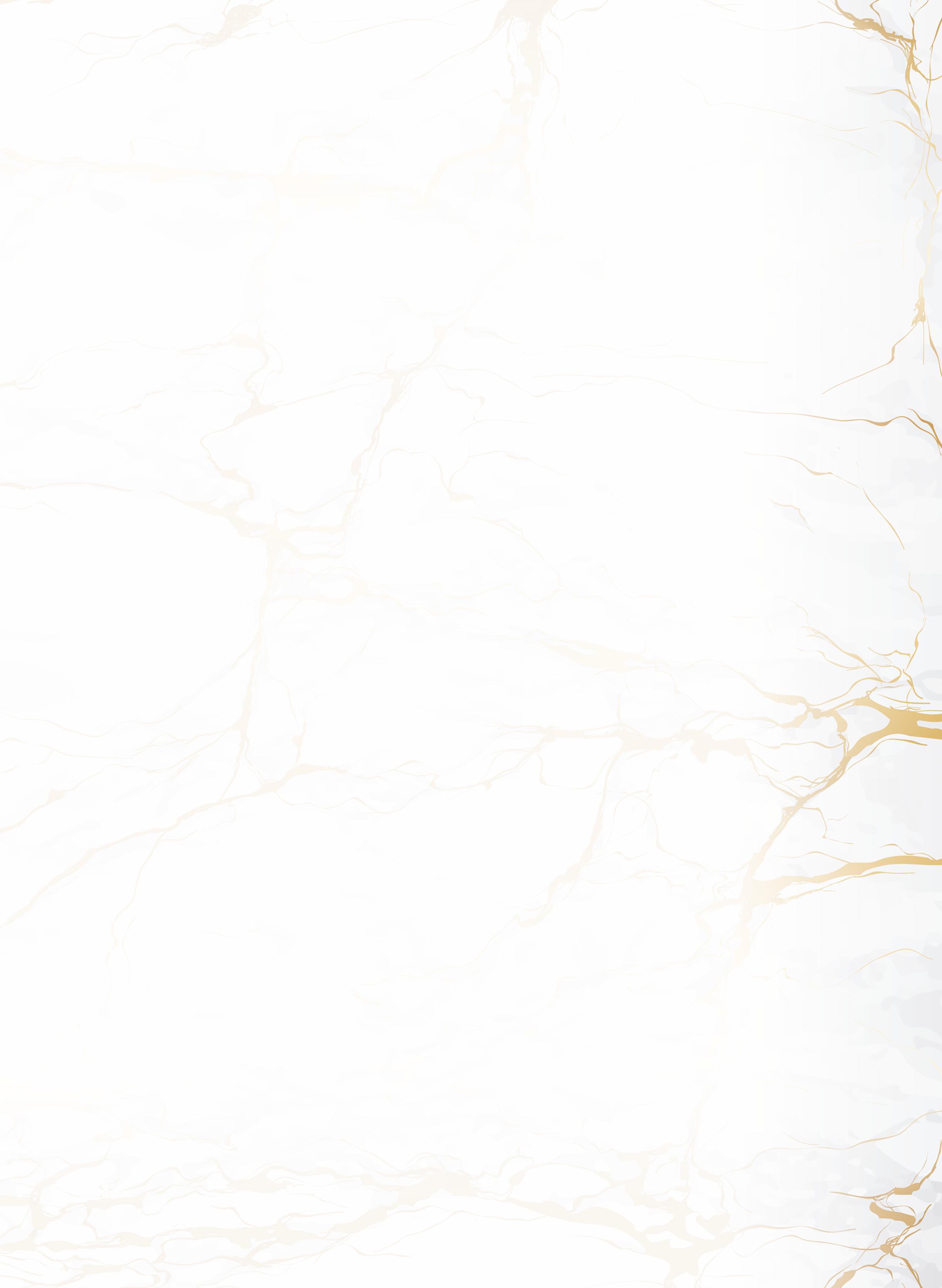
digital embellishment estimating, just because it was a little more complex.”
Cota worked with her production manager, Ken Huizenga, to refine the actual costs.
“I would help fine-tune those factors behind the Excel spreadsheet,” he said. “We had to take a look at what the real waste was what, what needed to be calculated and what didn’t. Often they’d try and micromanage the data that they’re putting into the spreadsheet, and I wanted to simplify it.
“If we’re running 12- or 18-inch sheets, we know the longest foil pulls are going to be 18 inches, and foil is not a very expensive part of embellishment. You could be looking at 6 to 10 cents per sheet. So to further cut that down, because you might only need foil on half a sheet, seems sort of pointless in the big picture. My job was to make it as easy as possible and to get into a ballpark. Remember, we’re trying to estimate here, and not necessarily nail it. So I was fine-tuning it over time.”
“As far as machine rate and the labor itself, it was pretty standard compared to the other pieces of equipment we had in the shop,” Huizenga said. “Where it could get a little bit more complicated was the coverage. Varnish is a big consumable. So, we often had them guess at low, medium and high coverage in the estimating department.
“Typically, if we did our job right, and sold the less-is-more approach, we were often finding our selves using less than what we had in our spread sheet for low coverage. Let’s say it was about 20% in the spreadsheet, and then we’d run the job and look at the calculator on the MGI and often find we were running 1% to 2% coverage on some items. So there was quite a bit of profit built into the estimate, and it still came out quite affordable for most customers.”
Matt Redbear is both a designer and MGI
JetVarnish 3D operator at Blue Ocean Press in Fort Lauderdale, Fla., which handles general, commercial and large format printing.
Estimating for embellishment is run as a module on the main Enterprise business software.
“When it comes to the digital embellishment, it’s usually considered as a completely separate line

item to the total estimate,” he said. “We don’t just go by coverage. It’s based on passes – how many passes it goes through, what is the sheet size, is there varnish, is there foil or no foil?”
Stock choice is also essential to runnability and times.
“There’s a job I just did on very porous stock,” Redbear said. “It’s considered a digital stock, so it will go through our iGen very nicely, but when you try to put foil and varnish on top of that, it takes on the texture of the paper, which could be desirable in some ways. But if you want a smooth job like you would normally get off this machine, you’ve got to get creative. You’ve got all these variables that an estimating app wouldn’t really know.
“Maybe it would be enough to just generalize in an estimator, so if it requires a specialty stock like that then a live proof must be done before the estimate continues forward, with feedback from the operator on how to get it to work.”
We put some of these points to Keith McMurtrie, joint managing director of the longestablished UK-based MIS developer Tharstern.
“MIS products have evolved massively over the last 10 years, many of them like Tharstern, allowing configuration to cater for new processes as they emerge,” he said. “Sometimes we have to create specific functionality, but often it’s more about setup and consultancy. Our customers have been quoting for these types of finishes for some time.”
Costing for inkjet embellishers has a lot in common with digital color presses, although there are also differences that estimates need to cater for.
“I think that’s the key point here,” McMurtrie said. “Many of these processes are variations on more traditional activities. From a Tharstern perspective, we would build a machine for the basic print and add further variants for the different finishes required and maybe cater for two, three or four passes.
“Adding varnishes and manipulations of percentage coverage is bread and butter to most MIS solutions. The multiple pass method can be catered for
by creating different configurations of machines. However, it is fair to say that it’s manipulation of existing functionality, as opposed to a specificallyengineered solution that can automatically handle this without having to create multiple machines.

“We have developed specific functionality for this in our new Tharstern Cloud MIS, making it even easier to quote by just specifying the raised effect requirement as part of the product specification, and the MIS knows to extend the production time to increase the number of hits, in order to create raised effects or embossing type finishes.”

Inkjet systems aren’t the only digital embellish ment process in use. More and more digital toner presses offer embellishment options as a fifth color, while printing an opaque white base layer

over a metallized substrate can give spectacular results at a cost. There’s the long-estab lished but limited foil-overtoner method, which requires little more than a heater and foil applicator, and the more recent foil-over-laminate methods (sometimes called sleeking), which give foil effects over full-color print using mildly modified thermal film laminators.
Each have their own costings and consumables as well as capital equipment, though none are as complex or expensive as the dedicated inkjets. On the other hand, the inkjets and other digital presses have their own digital front ends, which gives the benefits of predicting actual costings in advance, which can be fed to both estimating and costing
Continued on page 61
 By Richard Romano
By Richard Romano
Whether you are produc ing printed signage on the inkjet printing technologies we most commonly write about in WhatTheyThink, or constructing signage from traditional building materials, choosing the right material for the right job is perhaps the number-one consideration for any project.
You probably also know that there are more choices for printed substrates and constructed sign materials than ever. At the same time, there are two (at least) factors affecting the choice of materials for signage: availability and sustainability.
Signmakers always want to use the best-quality materials for their customers, or the material
most appropriate for a given project. As many have learned over the past year, with the “supply chain issues” the industry has been enduring, that isn’t always possible.
In the commercial printing world, paper shortages have led printers to get creative when choosing sub strates. In the manufactured signage world, alumi num extrusions have proven challenging to obtain. And in wide-format printing, some materials—like cast vinyl—have been in short supply as well.

Long story short: the resins used to make cast vinyl are also used to make adhesives, and
manufacturers and suppliers would rather stick, as it were, with adhesives, given them priority.
In mid-August, FLEXcon’s Jodi Sawyer wrote a sponsored article for WhatTheyThink identifying the situations in which the more readily-available calendared vinyl can be an appropriate and costeffective substitute. (Check it out at https://bit. ly/3KvgUlO.)
Both statistical and anecdotal evidence suggests the supply chain issues are starting to ease somewhat, depending on material, industry and even geography.
Both statistical and anecdotal evidence suggests the supply chain issues are starting to ease somewhat, depending on material, industry and even geography. So if you are still having challenges obtaining consumables, be sure to consult with your supplier, as they will likely be able to suggest viable alternatives without sacrificing the quality you and your customer expect.
A longer-term impact on consumable and other material choice is sustainability. Even once the supply chain gets lubricated, we still have the environment to worry about. The good news on this front is that manufacturers have been ramping up their sustainable offerings.
One category is paper-based alternatives to plastic.
NEENAH IMAGEMAX signage is a paperbased material design to serve as an alternative to styrene. It is compatible with UV, Latex and UVgel inks, and an added bonus is that it is lighter than styrene, which helps reduce shipping costs.
Monadnock offers its ENVIsual Board that is an FSC-Certified, recyclable, “unplastic” alternative to styrene for rigid signage. Monadnock also has several other mate rials in its ENVI line, includ ing materials for interior wall graphics and posters.

Online printer Smartpress.com also offers its proprietary styGreen alternative to styrene. StyGreen is 100% plantbased, dissolves in water and is biodegradable.
NEENAH IMAGEMAX, a paper-based material design to serve as an alternative to styrene.
“no plastic” as the most sustainable option, and that may not be the case. Plastic isn’t inherently bad as a substrate; ultimately, it’s what becomes of it at its end of life. Is it recycled or chucked in a landfill?
At the same time, when we say “plastics” we are referring to a wide variety of materials.
You always want to use the right materials for the right job, and sometimes plastic is just the right material. As a result, it is too easy to get hung up on
One plastic that is designed to be more sustainable than tradi tional PVC is Ultraflex EcoVantage. EcoVantage materials are 100% PVC- and phthalate-free alternatives to traditional PVC banner materials. The company says that it has also developed EcoVantage substrates with the end life of each product in mind. They can be recy cled (under PET code #1).
We’re not sanguine on incineration, but Ultraflex says these materials can be incinerated without releasing harmful toxins.
EcoVantage 190 is the flagship product in this line, but there are a variety of other EcoVantage materials for different applications, such as pole banners, backlit displays, billboards and most other indoor and outdoor applications.

(Above) Monadnock ENVIsual Board, an “un-plastic” alternative to styrene for rigid signage.
(Right) Ultraflex EcoVantage PVC- and phthalate-free alternative to traditional PVC banner materials.

Last summer, Ultraflex became a Sustainable Green Printing Partnership Gold patron.

And of course, let’s not forget traditional signage materials.
Aluminum remains a very popular material for signage, especially given its durability. It can also be printed on via flatbed printers, as well as decorated in non-digital ways.
Maxmetal, for example, has a full line of options for all kinds of signage applications, including its Maxmetal DP line specifically formulated for digital or even screen printing.
Another material is called Armour-Wood, which is essentially a sandwich comprising a plywood core between two sheets of aluminum. This gives outdoor signage extra
strength and durability with the slick appearance of aluminum.
At the moment, the choice of signage material for customer projects is a fine line among appropriateness for the job, sustainability and “what can I actually get?” As that last concern starts to fade away (hopefully soon), sustainability will be an evergreen concern alongside appropriateness. ●
Read More… Find article at PrintingNews. com/21160663
Richard Romano has been writing about the graphic communications industry for 20 years. He is an industry analyst and author or coauthor of more than half a dozen books.


After one physical event (2019), one virtual event (2020), and several attempts at a second physical event, PRINTING United is finally going to happen Oct.19 to 21 at the Las Vegas Convention Center.
As you may recall from past events, the empha sis of PRINTING United is on the “united” part, as it is designed to be the venue where all the disparate “silos” of the industry—commercial, wide format, packaging and labels, textiles, industrial—come together under one very large roof. The following round-up is a sam pling of the kinds of things you’ll find on the show floor.
Agfa (booth # C8130) will show some of the new features of its Jeti Tauro H3300 LED 3.3m heavy-duty hybrid inkjet printer: master roll-to-roll (MRTR) and backup cameras for completely unattended double-sided printing on single or dual rolls for 24/7 operation. Two easy-sliding cameras are

attached to the left and right sides of the MRTR, for front and back printing of the same or different images. The software automatically adds unique QR codes read by the cameras, and the print position is adjusted automatically at the start of each job. This approach identifies the exact location of the image on both sides of the media ensuring front-to-back accuracy of +/-3mm over 300 feet.
The Jeti Tauro H3300 HS LED also offers producers of corrugated cardboard displays the option to add a layer of glossy or matte varnish—either across entire surface (flood varnish) or selected spots (spot varnish).
Agfa is also showing its 3.2m Avinci CX3200 high-performance transfer paper-based or directto-fabric dye-sublimation printer, as well as its recently acquired Inca Onset X3 HS, now integrated with Agfa’s Thin Ink technology and driven by Agfa’s Asanti workflow.
Agfa Avinci CX3200 dye-sublimation printer
Epson SD-10 spectrophotometer
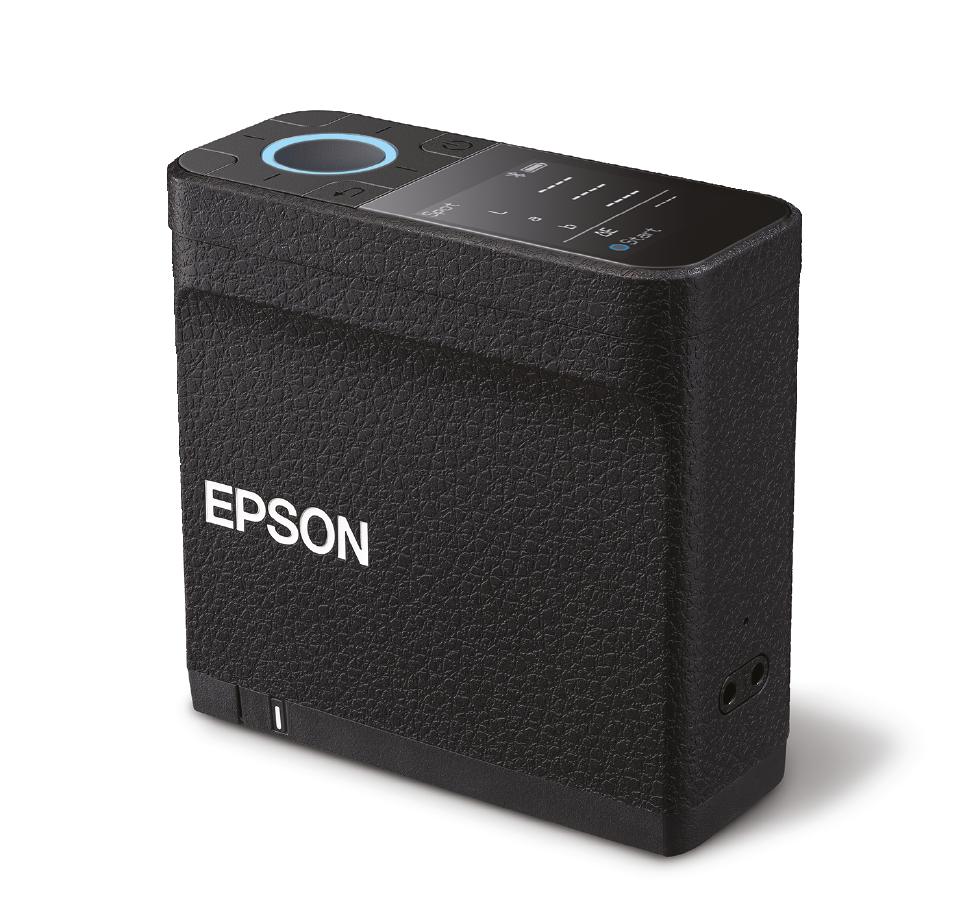
Durst (booth #N1043) will show for the first time in North America, the Durst P5 Double 4 development and latest evolution for the successful P5 series of printers (the option is available on the P5 350/HS and P5 210/HS).
The company will also demonstrate the new Durst P5 500 superwide roll-to-roll printing system. Building on the success of the reliable and trusted Rho series, and with a printing width of 5.25m and 900 x 1200-dpi resolution, the P5 500 is designed for efficient and unattended production.
Vanguard Digital Printing Systems (owned by Durst)(booth #N843) will show—also for the first time—two new digital printing systems. The VR6D-HS Flatbed UV-LED printer combines the latest Ricoh Gen 6 printhead technology and highspeed magnetic drive offering improved speed, reso lution and quality. The VKH900-HS Hybrid UV-LED printing system combines Vanguard’s award-winning VK300D-HS flatbed printer with the capabilities of its VKR3200-HS roll-to-roll printer, thus expanding the machine’s application potential. The new hybrid model uses Kyocera’s KJ4A printheads to print on either rigid or roll substrates.

The latest wide-format unit from EFI (booths #C8107 and N2220) is the EFI Pro 30h, a 126-in.
hybrid flatbed/roll-to-roll UV LED printer that prints up to 2,477 sq. ft./hr. and is targeted to businesses that see high-volume production of display graphics as a growth opportunity.
One perennial challenge for wide-format work flows has been color management, and to help assuage those problems, Epson (booth #C7730) recently announced—and will show for the first time at PRINTING United—its first spectropho tometer, the Epson SD-10, designed to give its SureColor printer owners a means of accurately measuring color. It’s a compact, battery-powered device that can be used stand alone via the built-in LCD display or wirelessly connected to a smartphone through the mobile app. Epson also has one of the most comprehen sive printer portfolios going, and their eco-solvent,

 By Cary Sherburne
By Cary Sherburne
Graphene is a miracle mate rial with the potential to revolutionize textiles.
A thin flake of carbon, just one atom thick, it’s not only the thinnest material ever but also the strongest. It conducts both heat and electricity, and is almost completely transparent. Yet it is so dense that not even helium, the smallest gas atom, can pass through it.
Research into the various uses of graphene across many industries has advanced apace. It’s now used in solar panels, screen technology and batteries.
Adoption in textiles has been a bit slower but now seems to be picking up. Graphene can be used as a coating, cova lently bonded into fiber itself, or added to apparel and other items as a conductive material for advanced wearables and sensors.

Get in on the ground floor with graphene in textiles.
Let’s start with wearables – with everyone talking about the Metaverse, connected wearables might even advance beyond their current role into a more expansive virtual reality role.
So what is the Metaverse? It’s basi cally an immersive virtual world in which participants use virtual and aug mented reality headsets to socialize and
game. At least that’s what it is right now. However, its uses are bound to expand with the technology.
Just like a social media presence has become essential for brands, so too will the Metaverse. And some experts are saying the time is now to start exploring how. We think that graphene will have a role to play, although exactly how much of a role is still TBD.

According to First Graphene, a leading supplier of graphene products sold under the PureGRAPH product brand, “The addition of graphene products to textiles can create a wide range of enhanced properties. For example, grapheneenhanced textiles are stronger and last longer, have excellent wear-resistance and thermal management. Not only can [graphene] improve the resistance to wear, abrasion and tearing, it also provides greater thermal and electrical conductivity. This opens up possibilities for smart textiles, wearable sensors and applications for data transmission.”

Thus the potential connection to the Metaverse.
It should also be noted that a great deal of work is ongoing with respect to graphene use in batteries. This is important in wearables, since a key limitation today is the weight and bulk of the power source for smart wearables.
As one researcher pointed out to me, no one wants to lug around a pound of batteries in order to monitor their performance during a run. The promise of graphene-based power sources is that they are not only more durable and lighter weight, but they are more sustainable as well. There’s still a ways to go before graphene enters the average
Read More… Find article at PrintingNews. com/21160633
person’s daily life. But it’s coming, and it will make a huge difference in many regards.
Another benefit of adding graphene to textiles is its antibacterial properties. This paper published by the National Library of Medicine, part of the National Institutes of Health, provides more detail, but the bottom line, they found, is that “antibacterial tests show that [Graphene Oxide] GO-containing fabrics possess strong antibacterial property and could inactivate 98% of bacteria.
Enhancing fabric with graphene is an important means of creating smart textiles with all kinds of advantages over traditional fabrics, even fabrics that are coated with other materials for specific purposes.
after 100 washings. In the case of cova lently bonded graphene for fibers such as Kyorene from Graphene One, it’s functional forever. Graphene One also tested toothbrushes enhanced with gra phene, and found that a normal tooth brush, after two weeks of use, has a total bacteria count of over 700,000; while the graphene-enhanced tooth brush only had 600. Makes you think differently about common items like a toothbrush.
And you don’t need to add much graphene for it to have an effect. For example, in the world of building mate rials, you only need to add about 33 grams of graphene per metric ton of concrete to strengthen it, according to The Graphene Council. Kyorene can be effective with as little as 1% graphene in the fiber, although more may be used depending on the desired results.
Most significantly, these fabrics can still kill >90% bacteria even after being washed 100 times. Also importantly, animal tests show that GO-modified cotton fabrics cause no irritation to rabbit skin. Hence, it is believed that these flexible, foldable and re-usable GO-based antibacterial cotton fabrics have high promise as a type of new nanoengineered antibacterial materials for a wide range of applications.
In other words, enhancing fabric with graphene is an important means of creating smart textiles with all kinds of advantages over traditional fabrics, even fabrics that are coated with other materials for specific purposes. The standard for most fabric coat ings is that they survive 30 to 50 wash ings, and as we saw from the above research, graphene is still functional
Graphene is especially gaining pop ularity for use in enhancing athletic apparel, whether it is adding strength to fabrics that undergo a significant amount of stress during usage, for thermal or odor control or to create smart athletic clothing.
According to ACS Material, a provider of graphene, it “allows users to monitor their performance and health, including heart rate and optimum movements. Additionally, there are developments in progress to improve carbon fiber com posites with graphene, which could be highly useful in sports equipment such as ski jackets and trousers for example.”

The company also touts graphene’s thermal properties.
“Graphene’s thermal properties have revolutionized the sport and ath letic textile industry. The material acts as a filter between your skin and the environment, expelling heat in warmer weather and preserving and evenly
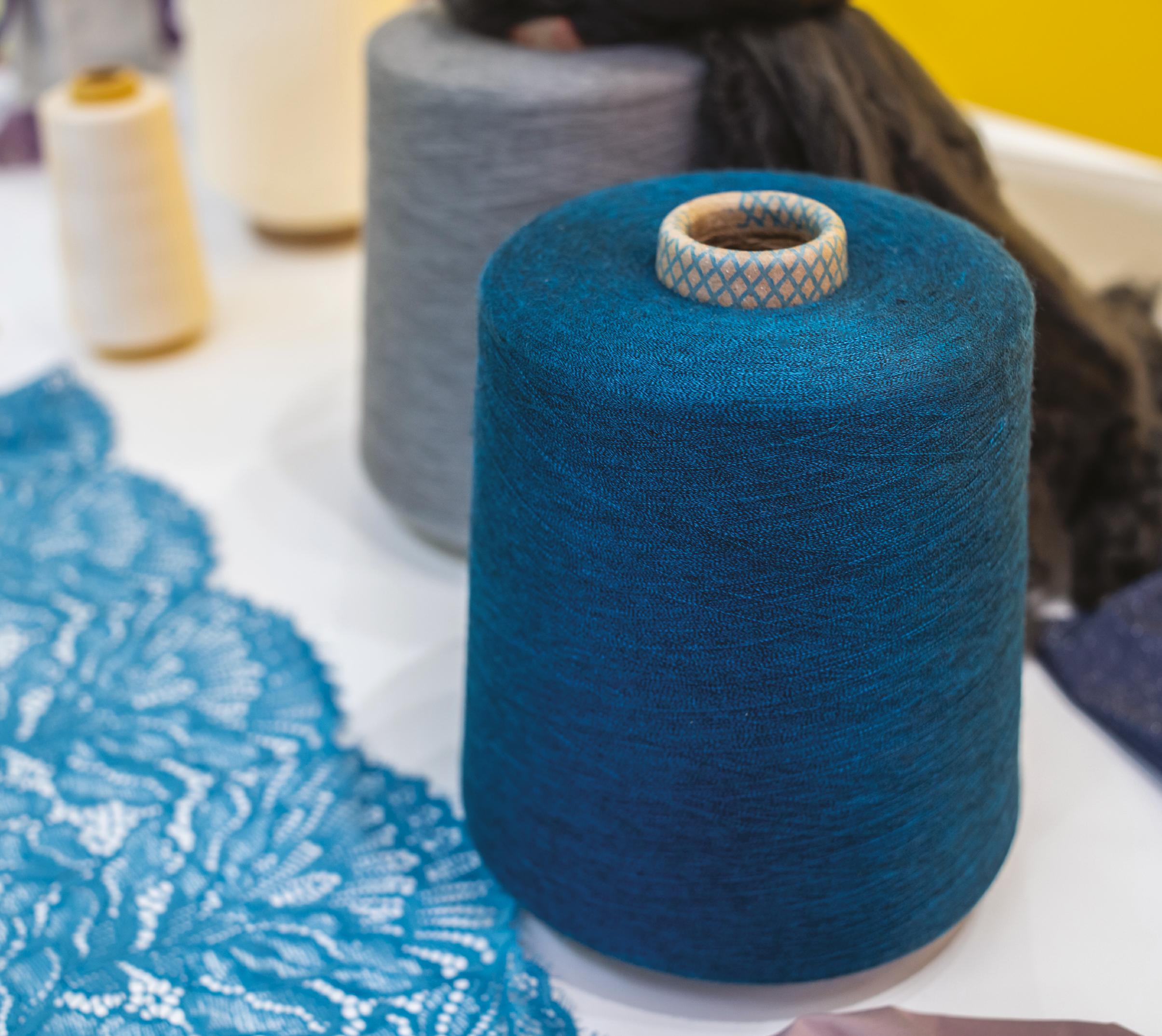
distributing body heat in colder cli mates. Graphene-enhanced fabrics have the potential to reinforce the natural way in which we adjust our body tem perature, all while remaining breathable and comfortable.”
Well, graphene won’t make you into Superman or Superwoman, but it is truly a super material. ACS notes that graphene, even though composed of
one layer of carbon atoms, thinner than a single human hair and invisible to the naked eye, is 200 times stronger than steel. It’s also non-toxic and hypoallergenic. It truly is a miracle material, and we are only on the ground floor of its use in textiles and apparel. If you think your products can benefit from graphene, now is the time to get moving. ●
Cary Sherburne is a well-known author, journalist and marketing consultant whose practice is focused on marketing communications strategies for the printing and publishing industries.


reat to see you again,” we say as we rediscover the camaraderie of live events.
spaces have been cleaned, and that food and beverage service meets the highest safety standards. Coordinate with your venue to ensure every aspect.
From graduation parties to weddings, grand openings to music festivals, the event industry expects a strong rebound and anticipates 23% growth over the next five years. Annual trade shows are in bloom – including those in the printing industry like the upcoming ISA Expo in Atlanta and Printing United in Las Vegas. We may not trust the buffet just yet, but the new normal feels pretty good.
If you’re hosting an in-person event, creating a social atmosphere is still a balancing act. To attract attendees and make everyone feel comfortable, here are seven tips to guide the process:
Mixing with large groups again can be intimidating. Make sure to convey, verbally and visually, that safety is your top priority. Onsite signage should inform attendees the steps you’ve taken, that
For those who prefer to wear them, plan to provide free masks, as well as hand sanitizer, and if you’re checking vaccine or test result status at the door, verify it with a hand stamp or badge sticker. If you decide to require a vaccine, communicate it when guests first reg ister, and again onsite, along with other changes from previous events.
In 2022, a handshake isn’t the same kryptonite it was the past two years. But it can still be awkward guessing whether a greeting may involve a hug or an elbow bump. This is especially true at annual conventions where many attendees are close friends and would be greeted with physical contact in prepandemic times.
Consider developing a wristband system where event participants can choose green for “ok to handshake and
hug,” yellow for “elbow bumps only” and red for “please socially distance.” This one visual cue will spare everyone a lot of anxiety.
While there may be no avoiding the shared space of an indoor convention hall, exhibitors and attendees will appreciate fresh air at every opportunity. Welcome receptions, cocktail mixers and other parties should be staged outdoors as much as possible, weather permitting. If you’re partnered with a local hotel, rooftop soirees add elegance and panoramic views to the social experience. Don’t forget heat lamps or outdoor air conditioning to keep the temperature under control.
Offer a slate of wellness activities, especially for multi-day events. Begin the morning with a group yoga class, host a hike as a social outing, schedule a walking tour of the city, etc. Many attendees are health-conscious, and many more simply restless, so getting their endorphins up will elevate moods and provide a physi cal outlet. It can also eliminate concerns about squeezing in solo workouts in the often-crowded hotel gym. We’re all ready to stretch our legs.

Nearly everyone appreciates the sensory stimulation of being at a live event, the amenities and discoveries that transform a plain business trip into a memorable experience. You’ll drive higher attendance and satisfaction if there’s more value than just raw information.
One-third of event professionals say they would allocate extra funds to improve the
onsite experience, according to Global Meetings and Event Forecast.
One easy step: supercharge the event graphics. It’s much cheaper than bringing a live sloth to draw a crowd – which we have seen done.
From travel impact alone, one large event can create the same amount of CO2 as an entire city for a week. As attendees are becoming more environmentally con scious, consider the steps you can take to resonate with this ethos, like eliminating straws, offering recycling, using recycled products when possible, and moving to PVC-free, eco-friendly materials in your trade show and event graphics and décor.
Attendees have a renewed appreciation for being at live events again and will want to share that enthusiasm more than ever on social media. Go beyond just promoting the event and create templates and event hashtags, engaging with attendees digitally as much as you can. Add a photo or video booth and live social media wall to amp up the sharable experience and amplify reach.
Business has always been built on in-person relationships. Maybe it’s that sale that happens from a new connec tion on the trade show floor or an unex pected opportunity that comes up over drinks at the hotel bar. As we all creep toward a post-pandemic world, we’re excited to reconnect in personal and professional settings that reaffirm our shared humanity. ●
Danielle Yuthas is the vice president of marketing for SpeedPro, a bespoke large-format printing franchise with 122 locations in the U.S. offering custom event graphics, environmental graphics, experiential marketing activations, signage, digital displays and more. www.speedpro.com.

The cannabis industry is one of the fastest growing markets in today’s world with revenues expected to exceed $30 billion by 2025.
The industry brings new market opportunities to some in the printing world; but with this newfound niche comes plenty of headaches, not the least of which is legally banking receipts.
States have different rules and interpretations; but an employer’s responsibilities under the Occupational Safety and Health laws include a basic requirement that transcends all.
“Provide a workplace free from serious recognized hazards and comply with standards, rules and regulations issued under the OSH Act.”
In a business environment in which workers are scarce, it is critical that due care is taken to protect the workforce, especially given the dangers of operating the vast array of equipment used in manufacturing and delivery of graphic communications.
At a minimum, employee handbooks should be updated to address your drug policy. Jobs with safety risks should have job descriptions that specifically note a zero-tolerance drug policy. However, care must be taken to understand the laws of the state(s) you operate in. While many companies maintain overall zero-tolerance policies, states have different rules related to testing and medically necessary use.
In one state, under that state’s anti-discrimination law, medical marijuana can be used to treat certain conditions forcing employers, in these situations, to consider reasonable accommodation for employees.
A federal court in another state found that a medical marijuana card cannot be a reason for declining to hire an applicant.
A key problem is that THC - cannabis’ psy choactive ingredient - can show up in a drug test for a month or more. So what does an employer do when an accident occurs and the post-accident drug test comes back positive?

Consider the implications of the affected employee claiming that their drug use occurred during nonwork hours and/or they have a medical marijuana card.
Read More… Find article at PrintingNews. com/21160703
In Arizona, Walmart was found to discriminate against an employee when they ter minated the employee after testing positive following an accident, although the employee had a medical marijuana card. Clearly, employers need to consult labor law attorneys before taking an action that might be considered discriminatory.
One critical step for employers is to train managers to recognize some signs of impairment and what to do if noted.
● Slurred speech or inappropriate speech
● Red, glassy eyes
● Loss of focus during a conversation
● Loss of coordination
● Lack of energy and loss of motivation
● Emotional behavior that does not match the situation
● Establish and notice everywhere a “Drug-Free Workplace.”
● Comply with state and local laws.
● Update job descriptions of safety-sensitive posi tions to specifically include a “no drug” policy.
Some printers are finding new growth in sup porting marketing, communications and packaging in the cannabis marketplace, but all printers need to be vigilant about the workplace issues brought about by the legalization of cannabis and its derivatives in many states. ●
Lou Caron is a CPA with extensive business experience in both the insurance and printing industry, and has served as the chief financial officer of companies in both industries. He is the President/CEO of Printing Industries Association, Inc. of Southern California.

Both in the workplace and as a print and packaging opportunity
systems ranging from simple spreadsheets through to full MIS/ERP systems.
In the early days of digital embellishments, quoting strategies were mainly aligned to traditional analog pricing. Frequently, users would keep the fact that their process was digital a secret, charging for screens and dies, simply pocketing the difference. This strategy was a successful first mover advantage in the space, taking full advantage that the market was not yet educated on these new technologies to charge the same for digital as analog.
out there, but in those promotions, I don’t talk about the technology,” Zeff said. “I say, ‘This is how we tell stories now.’ Then, when you scan the QR Code, you see me standing on the sidewalk. Then my holotwin talks about AR.”
While Zeff has been successful selling AR-fueled campaigns, he acknowledges that we are still in the early days.
“Businesses are just starting to see the poten tial for how AR can be part of their toolkit as it relates to selling, training and engagement,” he said. “It’s incumbent upon creators to put those examples about there to give potential clients a
However, with the evolution of the various OEM players in the space, an increase in agency awareness, and a consistent marketing effort from the users, a new pricing matrix has organically evolved for digitally embellished work.
While the resale market pricing of digital embel lishments has lowered compared to traditional analog prices in the past years, users are reporting increased market demand from the brand side, an increased famil iarity with the technical functionality, and increased volumes for their digital embellishment capabilities.
Perhaps this is a sign that digital embellishment is finally going mainstream. What do you think? ●
peek at what’s possible.”
Seeing is believing, which is why Zeff’s website is full of examples of AR, both past and present.
“For me, AR is something I use as a sweetener to make any storytelling engagement more rich,” he said. “Like adding a spice to a dish. If I’m creating a microsite for a client, I’m looking for a way to include AR. If I’m doing a print campaign, I’m looking to add AR. I’m looking at AR as an exciting way to extend those experiences—make them accessible to anyone with a smartphone, thereby unlocking many ways to tell stories.” ●
UV, dye-sub and resin (latex-esque) units will be on display.

Although Fujifilm’s (booth #N825) first true hybrid made its worldwide debut at FESPA last spring, the Acuity Ultra Hybrid LED is making its North American debut in Vegas. It is a high-end 3.3m printer that prints on both rigid and flexible sub strates at speeds of up to 218 sq. m/h (in RTR mode).

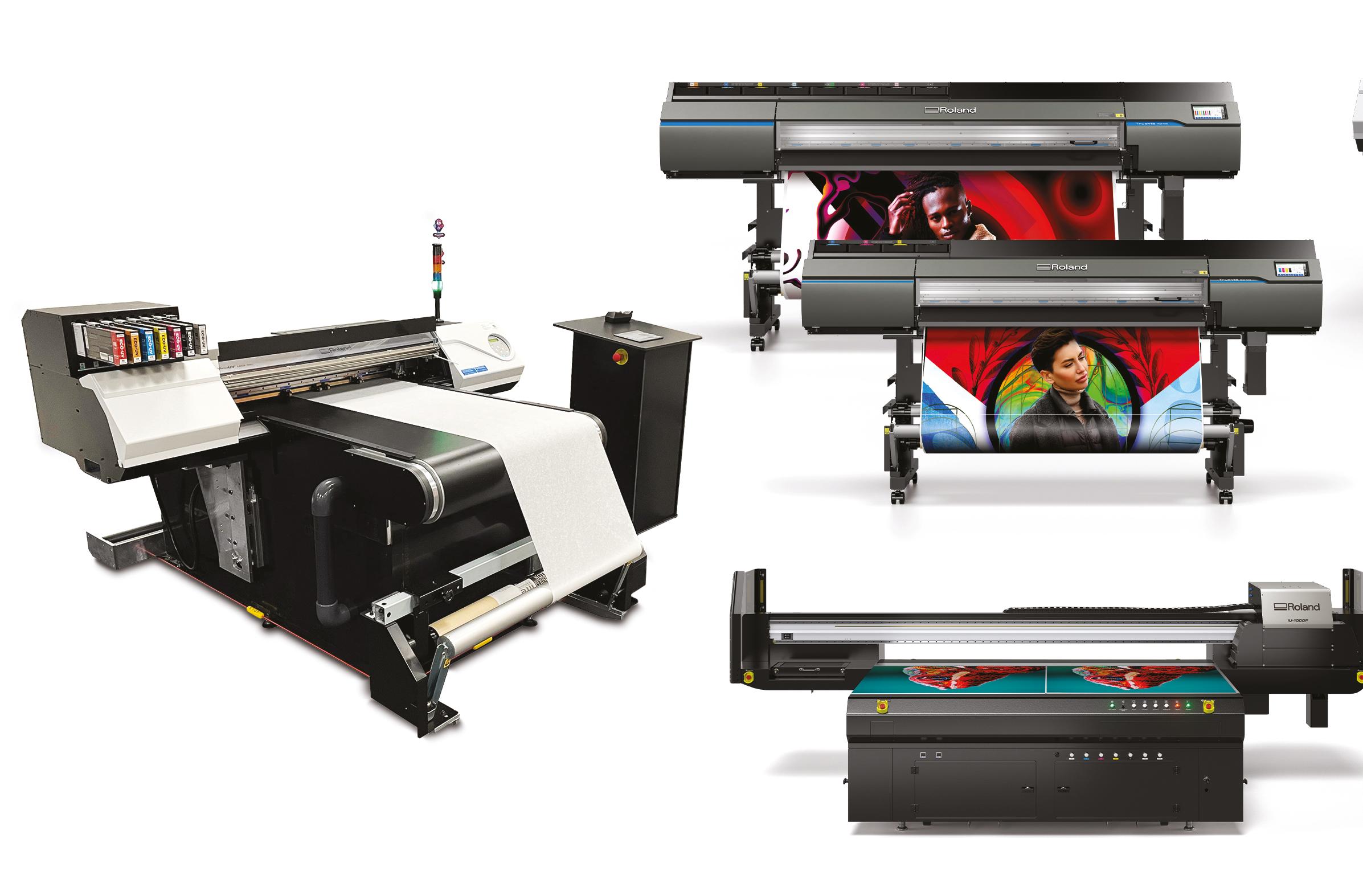
Fujifilm has also developed a new ink range for this machine, the Uvijet UH, which offers six colors standard (CMYK, Lm, Lc) available with white ink as
an option. The new ink has both Greenguard Gold and AgBB certification.
On the software front, OneVision (booth #N2415) will show its modular solutions for end-toend automation from file input to printing, embel lishment and finishing. Look for demonstration of its smart finishing process with partner Kongsberg Precision Cutting Systems.
Onyx Graphics (booth #N1235) recently announced ONYX 22, the newest version release of its wide-format RIP and print workflow soft ware. ONYX 22 introduces a new drag-and-drop user experience for file management and Quick Set automation, smart job submission from design to print, artwork placement controls for flatbed and DTG printing and easy-to-use tools for everyday automation.
ONYX 22 also introduces color tools for increased color output accuracy and an all-new ONYX Color Reference Library to easily match color for any printer. This dynamic reference library highlights in-and-out of gamut colors and can be printed or used in ONYX software to know what colors are possible on each device and media combination.
Roland (booth #C8930) has many new products it will bring to Vegas: the brand new third-generation TrueVIS VG3 and SG3 wide-format printer/ cutters including the 64-in. VG3-640 and the 54-in. VG3-540. They offer six ink configurations, and an
eight-color (CMYK+Lc+Lm+Or+Gr) option. The 54-in. SG3-540 and 30-in. SG3-300 are entry-level versions of these machines.

The VersaUV LEC2 S-Series UV flatbed ups the thickness of materials/objects it can print on to 7.87 in. The version Roland will show is the new “beltdriven” hybrid model, the LEC2-330S B-200.
Also on display at PRINTING United, but not new, will be the VersaUV LEF2-200 benchtop UV flatbed printer and IU-1000F high-volume UV flatbed printer.
SwissQprint (booth #C6415) will show its Kudu UV wide-format printer for the first time in North America. Kudu is the first swissQprint UV unit to feature 10 color channels, and can print up to 300 sq. m/h (3,229 sq. ft./h). The flatbed Kudu also fea tures a roll-to-roll option.

The company will also show its dedicated rollto-roll printer, the Karibu. This model packs unique features aimed at efficient, top-quality roll-toroll printing. SwissQprint says it will make further announcements at the show, so be sure to follow WhatTheyThink’s PRINTING United coverage.
This is just a handful of new and noteworthy wide-format products that will be shown at PRINTING United. We’ll cover the show in words, images and videos at whattheythink.com and printingnews.com ●
 Kudos to Kudu: swissQprint’s new UV flatbed is making its North American debut in Vegas.
Kudos to Kudu: swissQprint’s new UV flatbed is making its North American debut in Vegas.
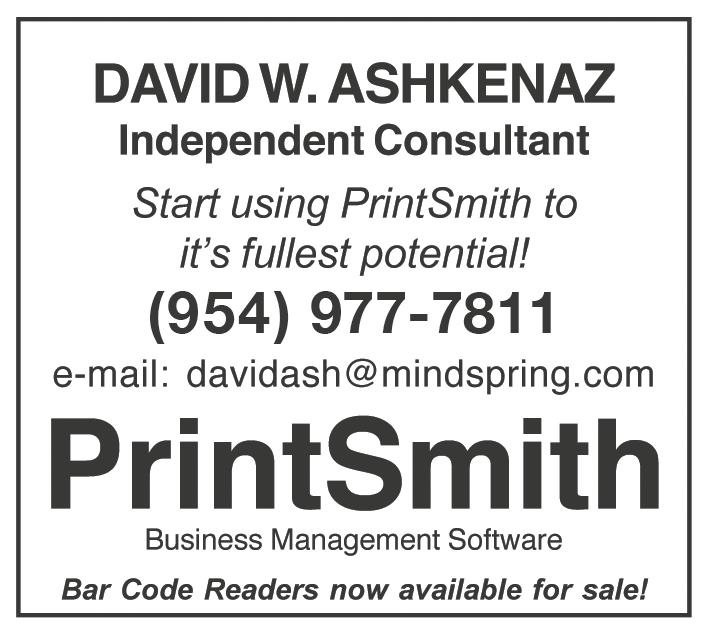
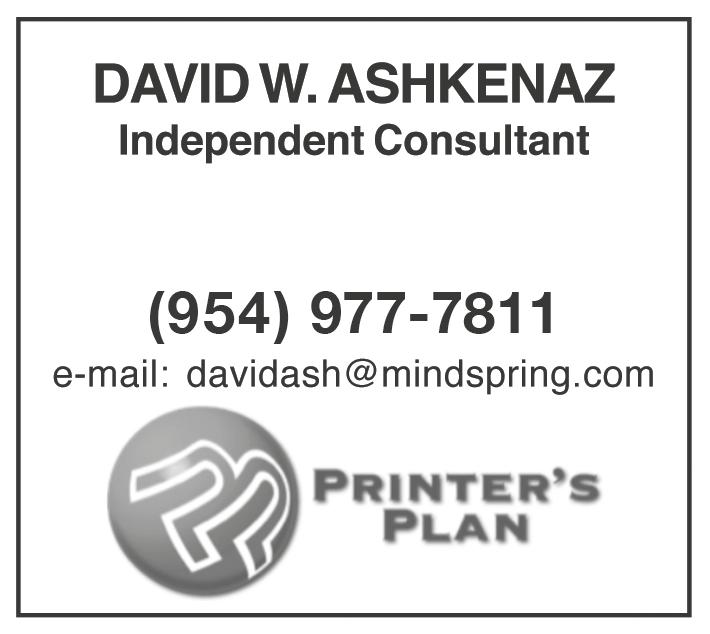





For
For
Canon Solutions America Inc 3 PrintingNews.com/12303268 https://csa.canon.com/services; 844.443.4636
Canon USA....................................................41 PrintingNews.com/10004298 www.usa.canon.com; 631.330.5000
EFI......................................................................5 PrintingNews.com/10221386 www.efi.com; 800.875.7117
National Print & Sign Owners Association (NPSOA) 37 PrintingNews.com/10848553 www.printowners.org; 888.316.2040
Printing United Alliance 31 PrintingNews.com/21141082 www.printing.org
Signs 365 68 PrintingNews.com/10449454 www.signs365.com; 800.265.8830
Ennis, Inc


11 PrintingNews.com/10005202 www.ennis.com; 800.972.1069
FLEXcon 51 PrintingNews.com/10005383 www.flexcon.com; 508.885.8200
Heidelberg 19 PrintingNews.com/10005802 www.us.heidelberg.com; 888.472.9655
HP
67 PrintingNews.com/10005824 www.hp.com/go/GSB; 866.229.7313
Kodak. 15 PrintingNews.com/10005105 www.graphics.kodak.com; 800.22.KODAK
Muller Martini Corp 17 PrintingNews.com/10006773 www.mullermartiniusa.com; 888.2.MULLER (68.5537)
Smartsoft
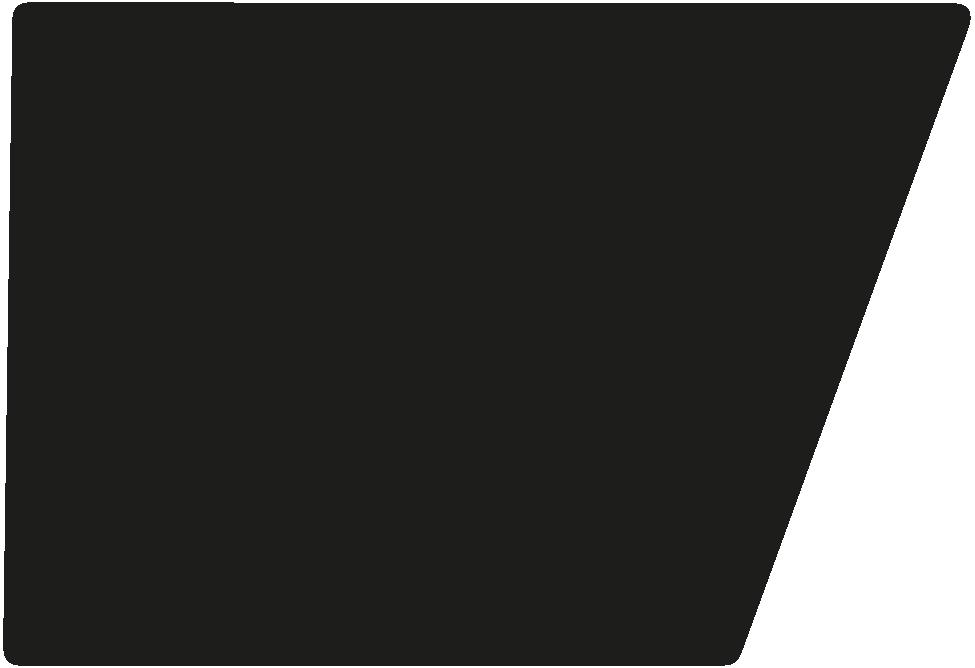
27 PrintingNews.com/10004777 www.presswise.com; 888.227.7221
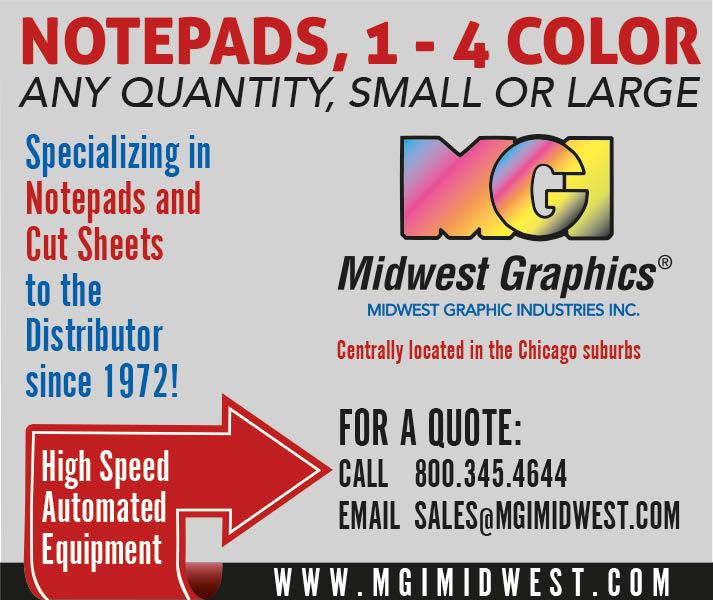
Taktiful...........................................................21 Printingnews.com/21160262 www.taktiful.com
Trotec Laser
PrintingNews.com/12307487 www.troteclaser.com; 844.333.3757
Uline
PrintingNews.com/10718883 www.uline.com; 262.612.4200
Xante 2 PrintingNews.com/10008689 www.xante.com; 251.473.6502

Vague musings, name-dropping, streams of consciousness and occasional flashes of brilliance... from Johnson’s World.
“Paper shows that analog technol ogy can excel at specific tasks and uses on a very prac tical level, especially when compared to digital tech nology. While paper use may have shrunk in certain areas since the introduction of digital communica tions, in other uses and purposes, paper’s emotional, functional and economic value has increased. Paper may be used less, but where it is growing, paper is worth more.” — David Sax, Revenge of Analog
“Storytelling comes from many voices, and print is the most experienced voice – a tried and true technology that can’t be ignored.” — American Crew’s David Reaccuglia, quoted in Domtar’s Paper Matters magazine

Guildhall, a restaurant at which I’ve eaten once or twice (before they began requiring a deposit with dinner reservations) sent me an email in February with this subject line:
“Guildhall’s got your Super Bowl & Valentine’s Day covered ”
That was it. There was nothing in the body of the email except the Constant Contact boilerplate that normally appears at the bottom. A stupid mistake, but one that occurs often with email for the simple reason that email is so easy to use. Yes, it is too user friendly. The owner’s teenage son or daughter can whip up a “marketing campaign” using Constant Contact or a similar service in a matter of minutes. Press send, and voila! The hard cost is practically nothing.
If the offer was a printed mailer or postcard, the printer would have alerted the restaurant that, “Hey, your page layout file is empty.”
Sometimes more touchpoints are a good thing.
“Every form of theatre has something in common with a visit to the doctor. On the
way out, one should always feel better than on the way in.” — Lord Peter Brook, famous director who passed away last month.
Does not this hold true for every form of art, for every medium? Is it not the responsibility of the printer to see that the world is a better place for the words and pictures that they produce and disseminate?
A manufacturer whose name is synonymous with copying posted this on LinkedIn:
Read More… Find article at PrintingNews. com/21160616
“An average office worker uses 10,000 sheets of paper per year. We can help reduce that. Our capture and content services takes paper and digital informa tion and lets you edit it in the cloud. Find out more at www…..”
I’ll just leave that tidbit right here without comment, but see below.
“With an average of 13 pages printed per person, per month, and over 12 million office-based workers, it is estimated that over 1.5 billion personal docu ments are being printed by staff at work each year.
Almost one in five Brits said they use work print ers to print personal documents, while 13% said they print these documents multiple times a week. Just 6% of those surveyed said they print per sonal documents at work less than once a year.” — PrintMonthly magazine

If we extrapolate PrintMonthly’s math out to the United States, that’s 17 billion (yes, billion with a “B”) personal pages being printed at work by Americans.
That’s a massive hidden cost that business is absorbing, and a huge inconvenience for consum ers. It is also a tremendous quantity of print volume that doesn’t make it into Commerce Department statistics.
Don’t let anyone tell you that end-users prefer digital formats. ●

